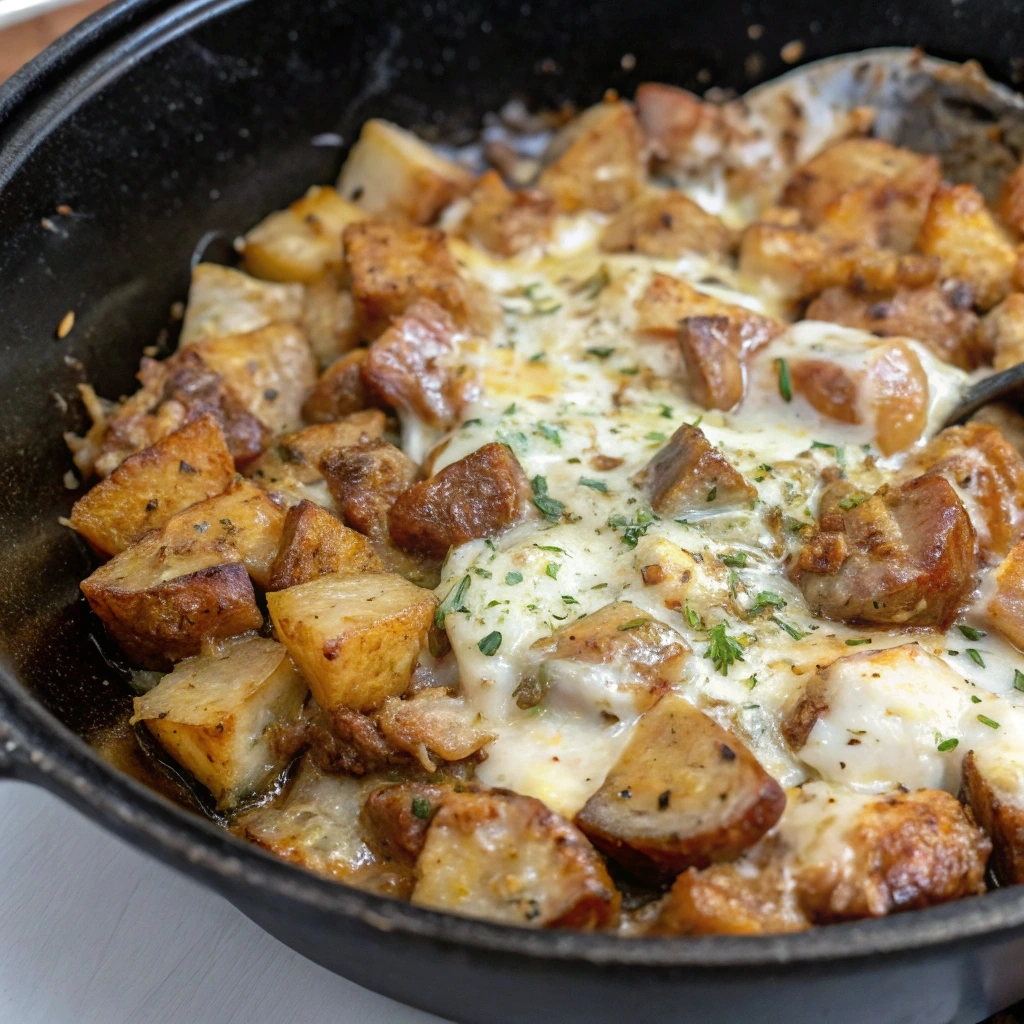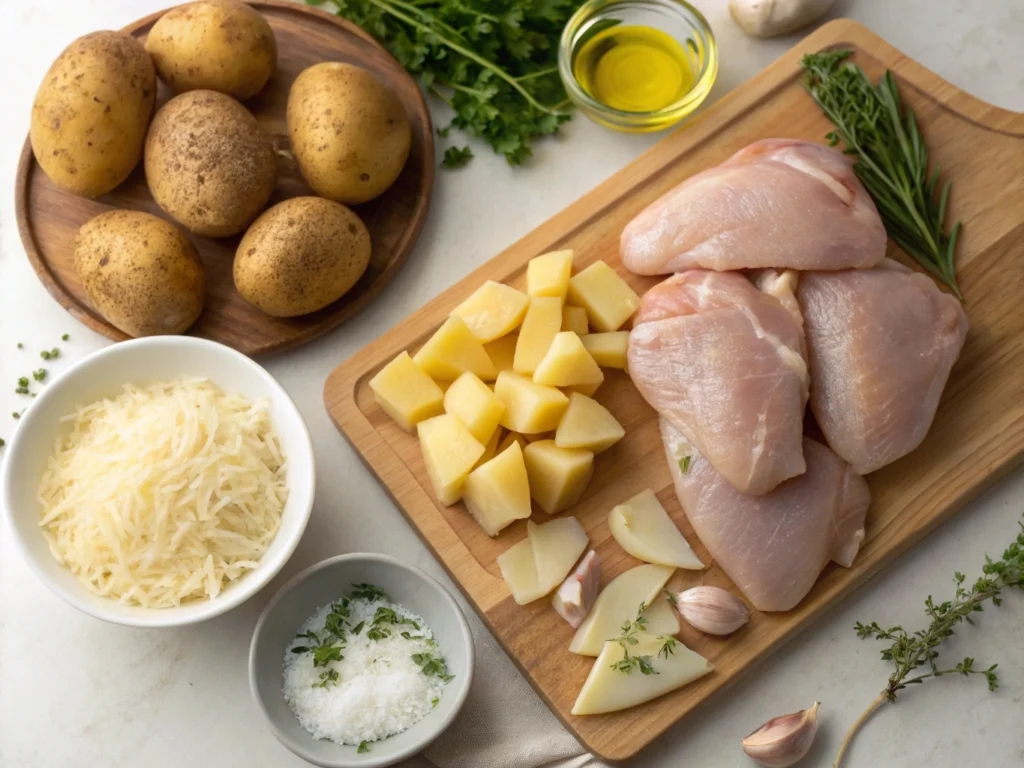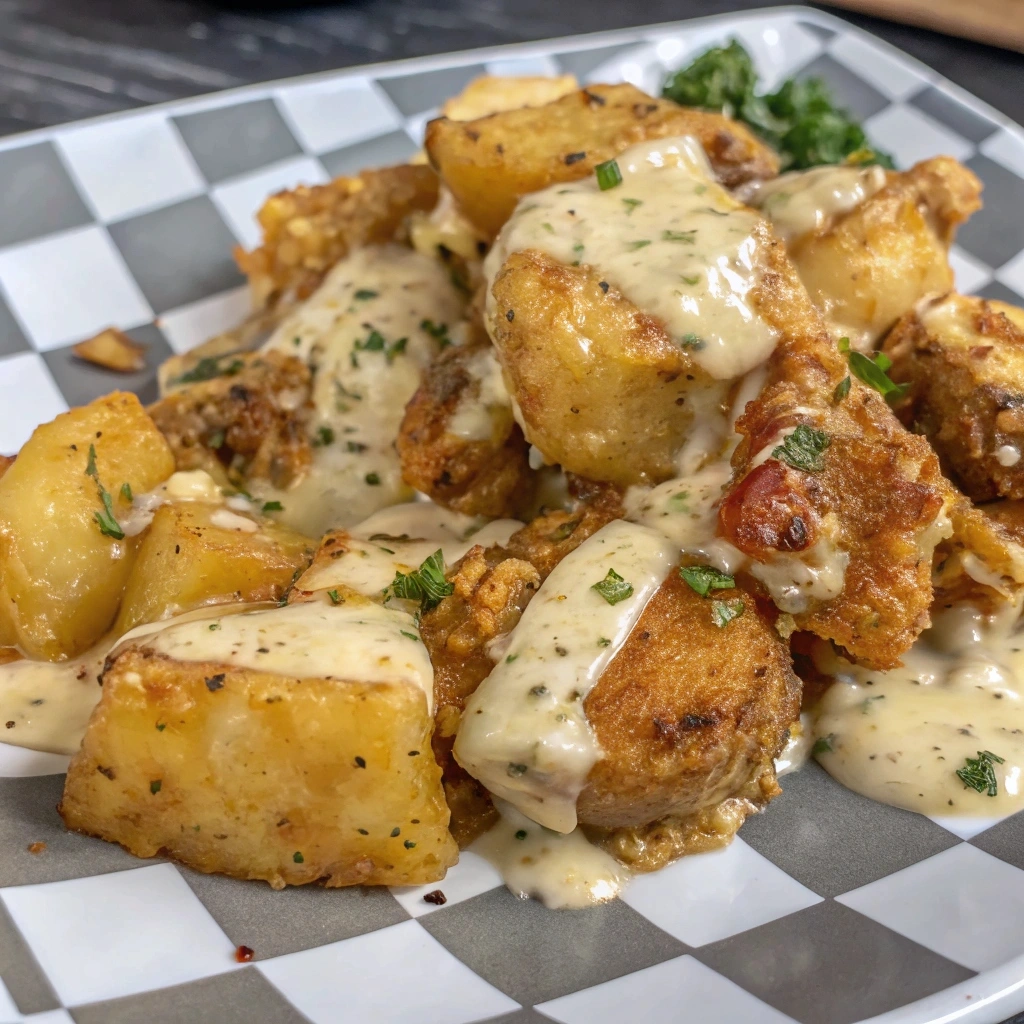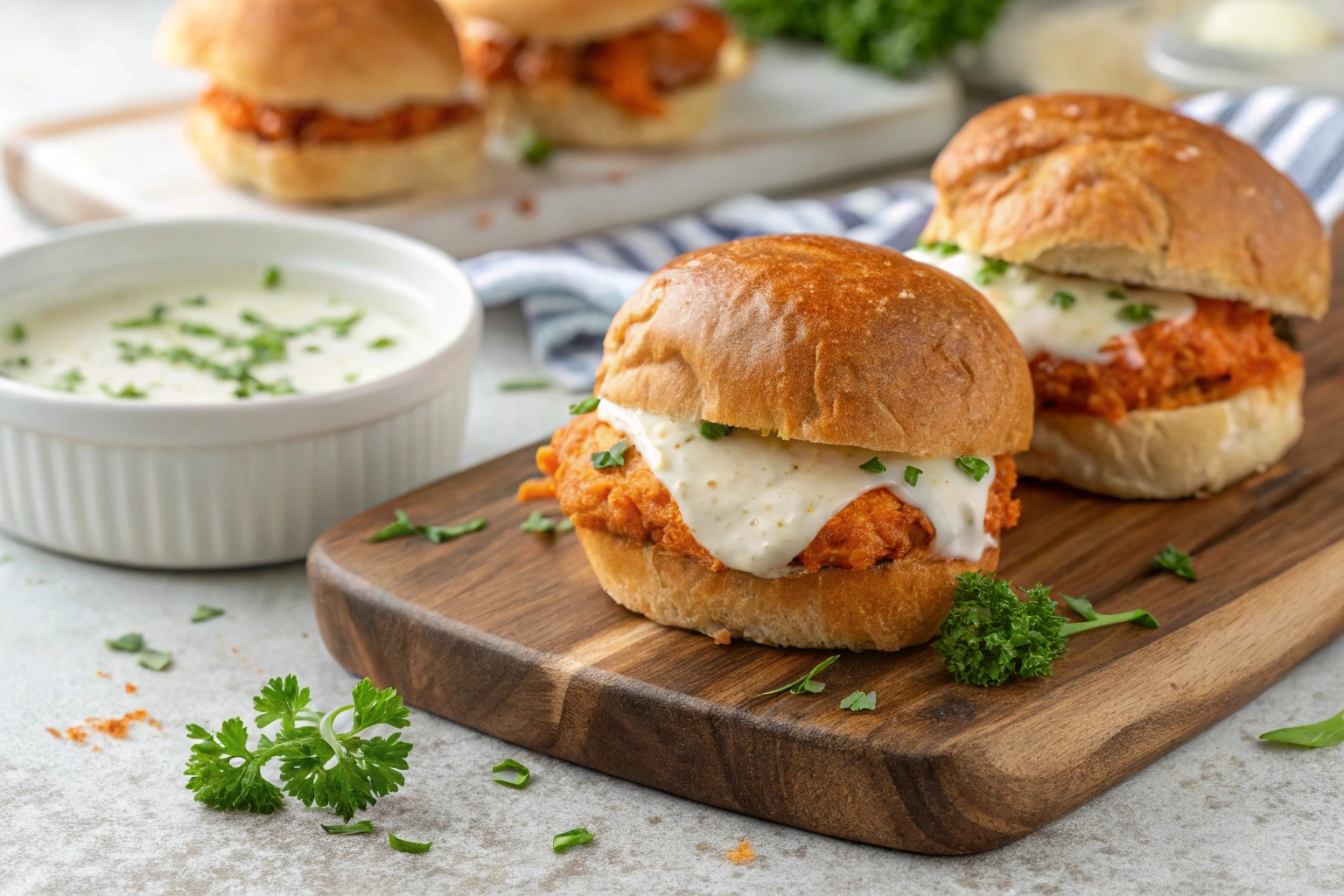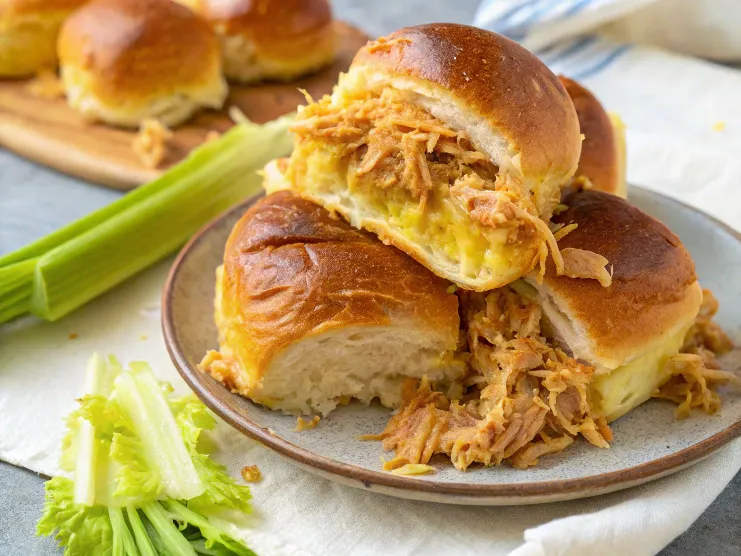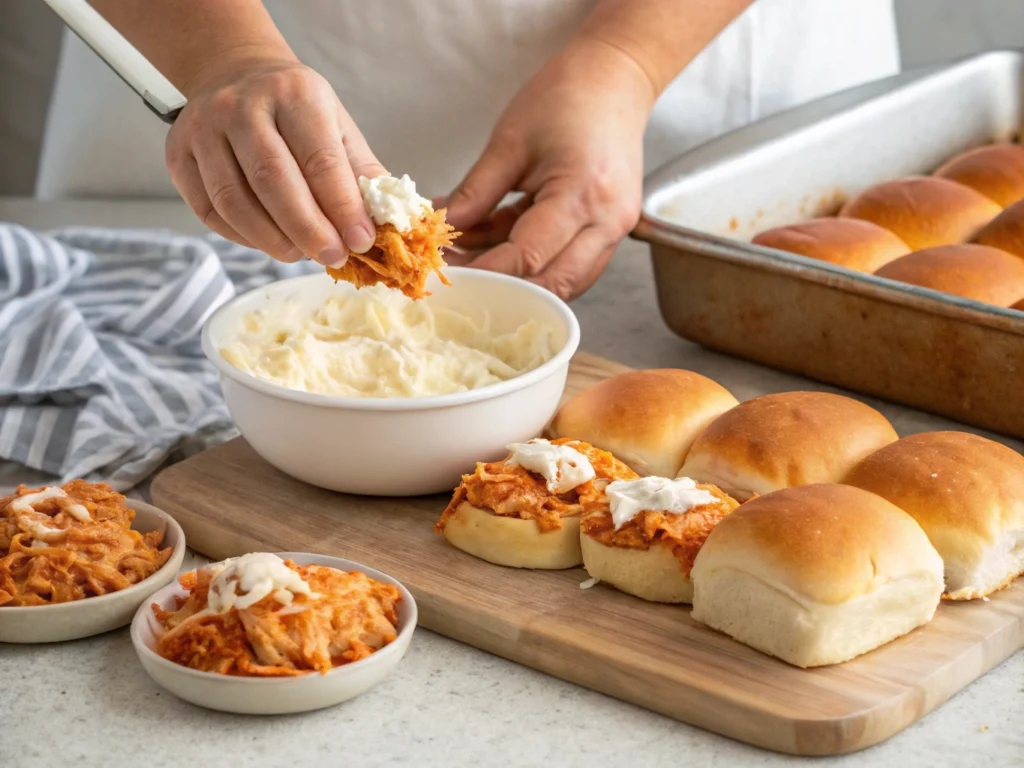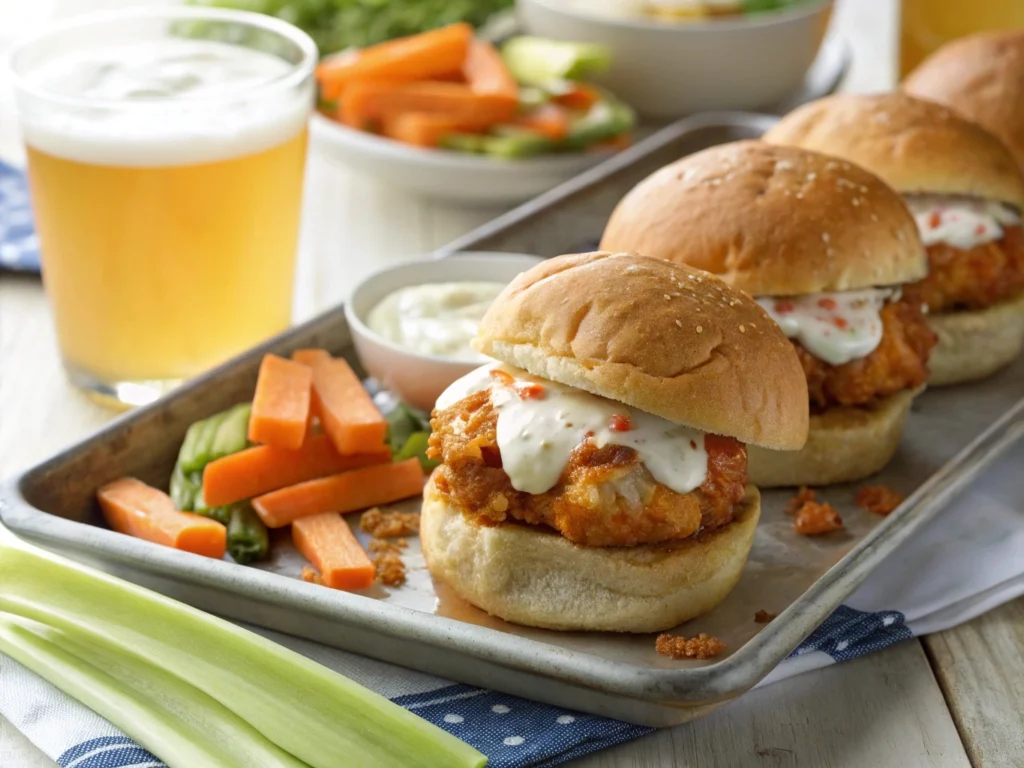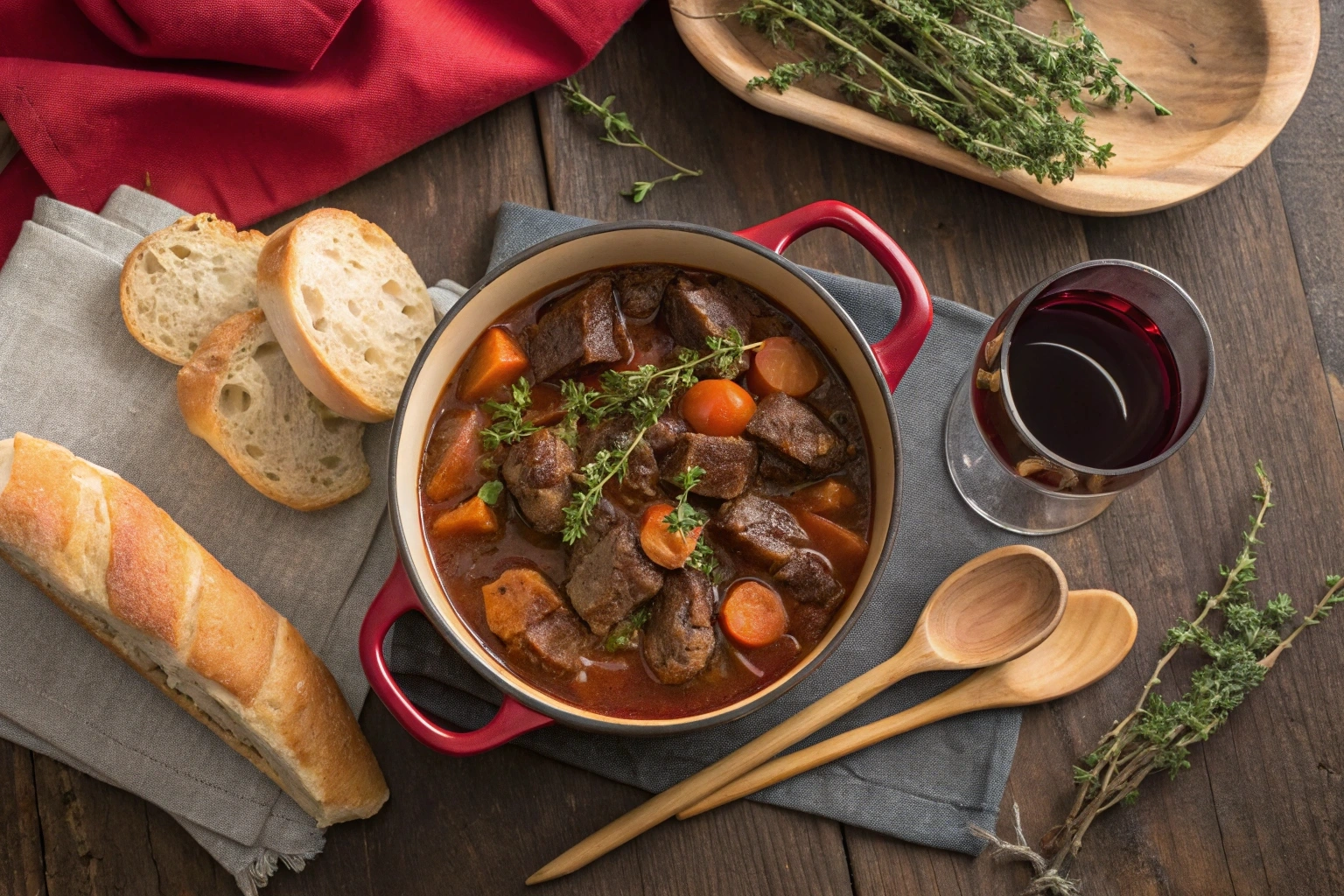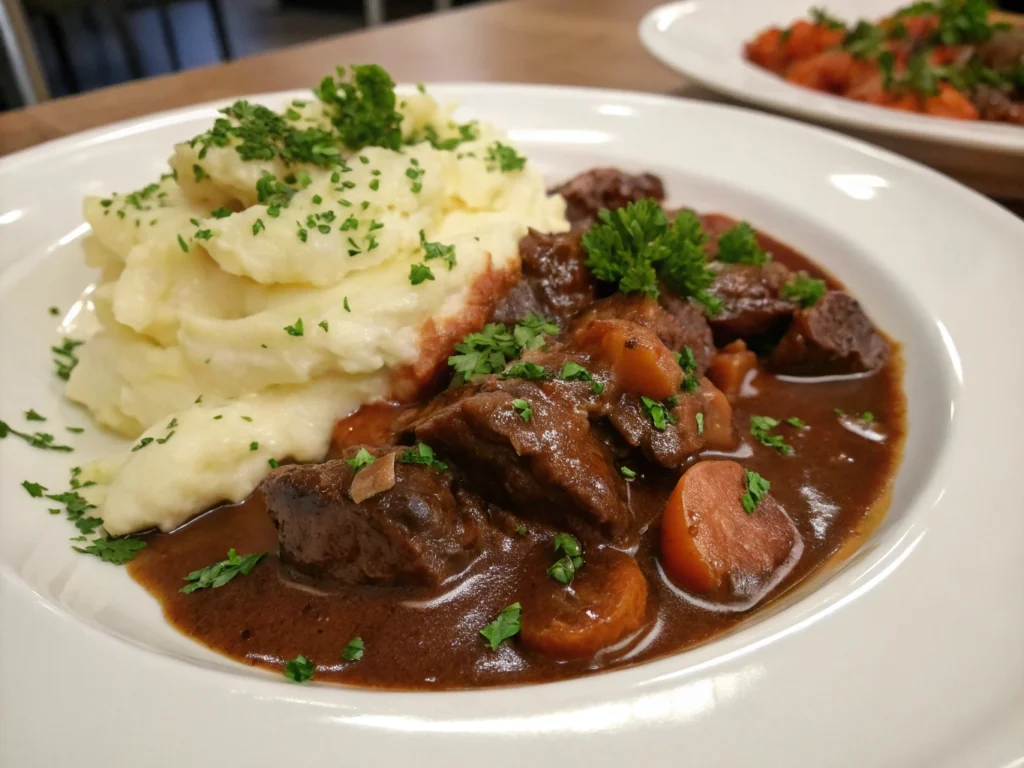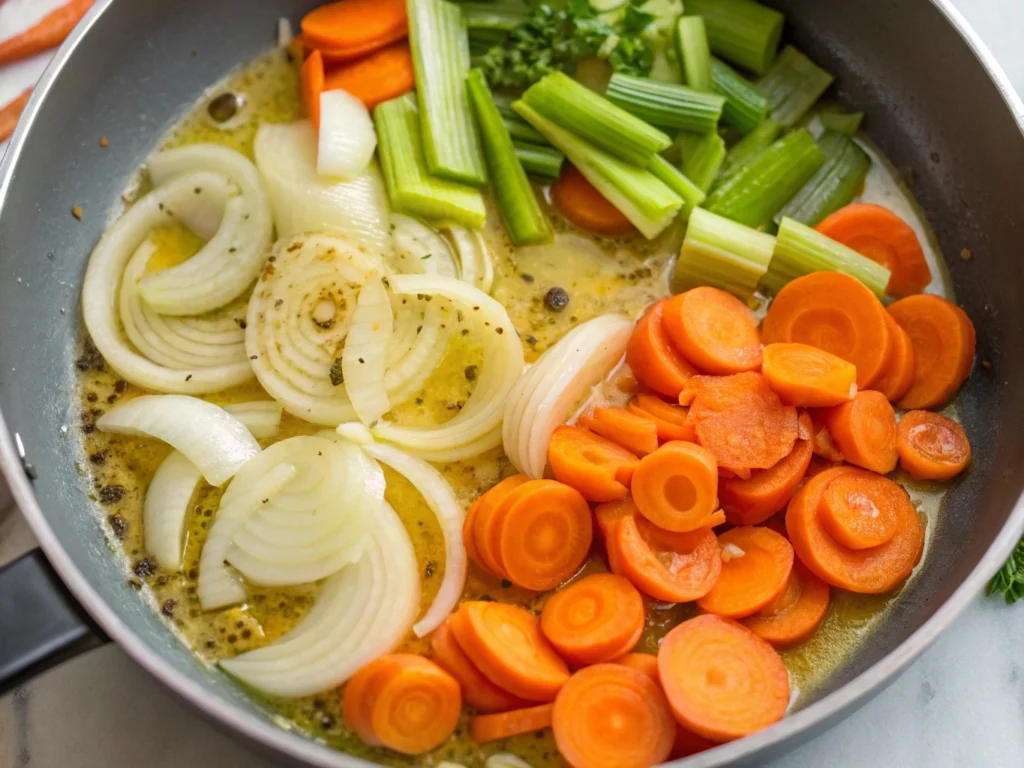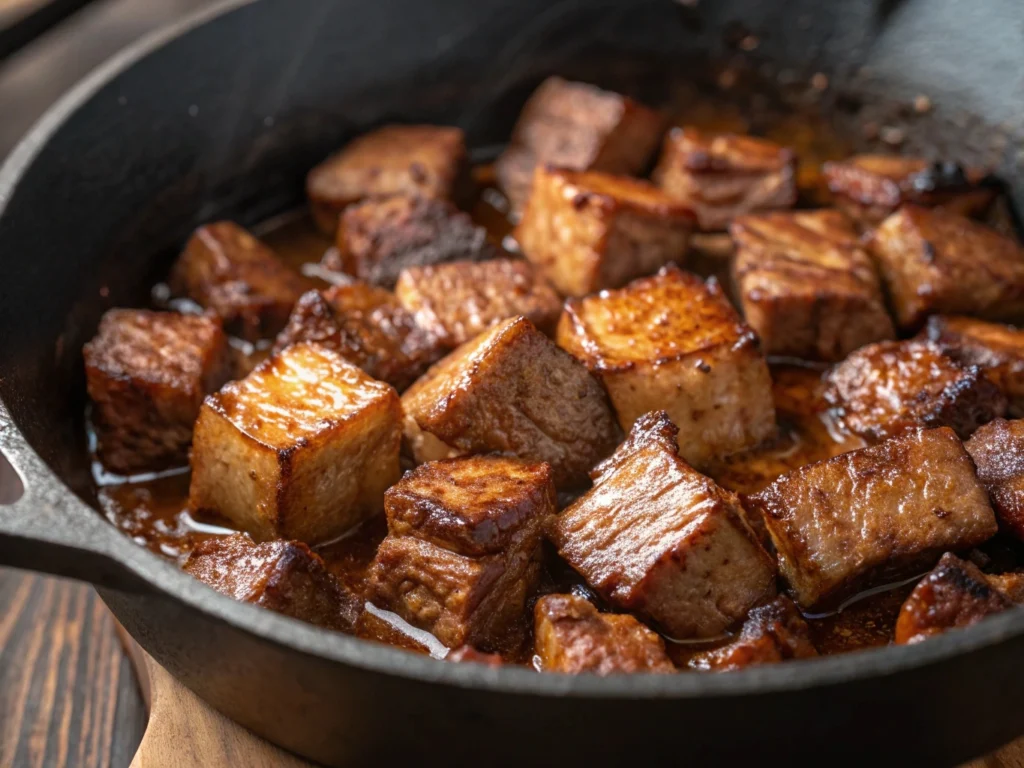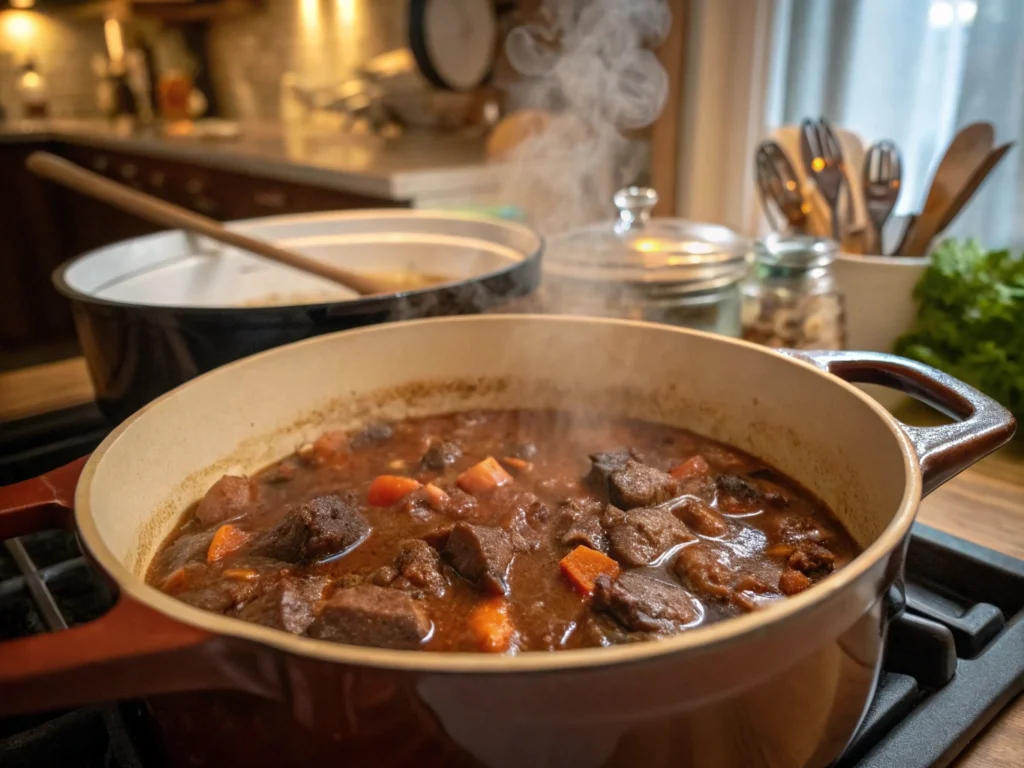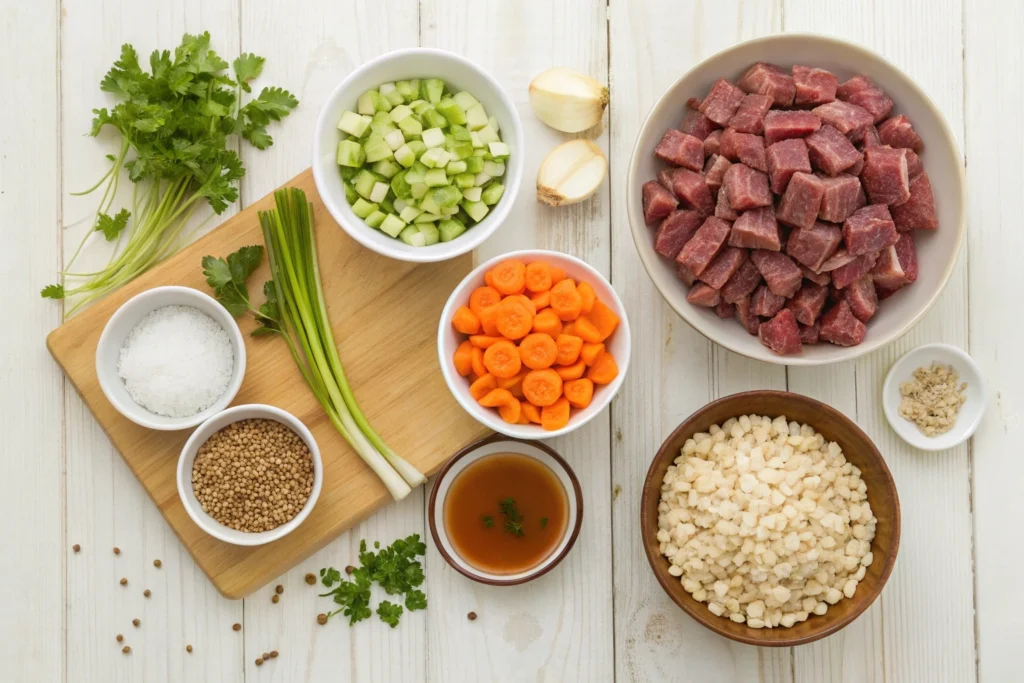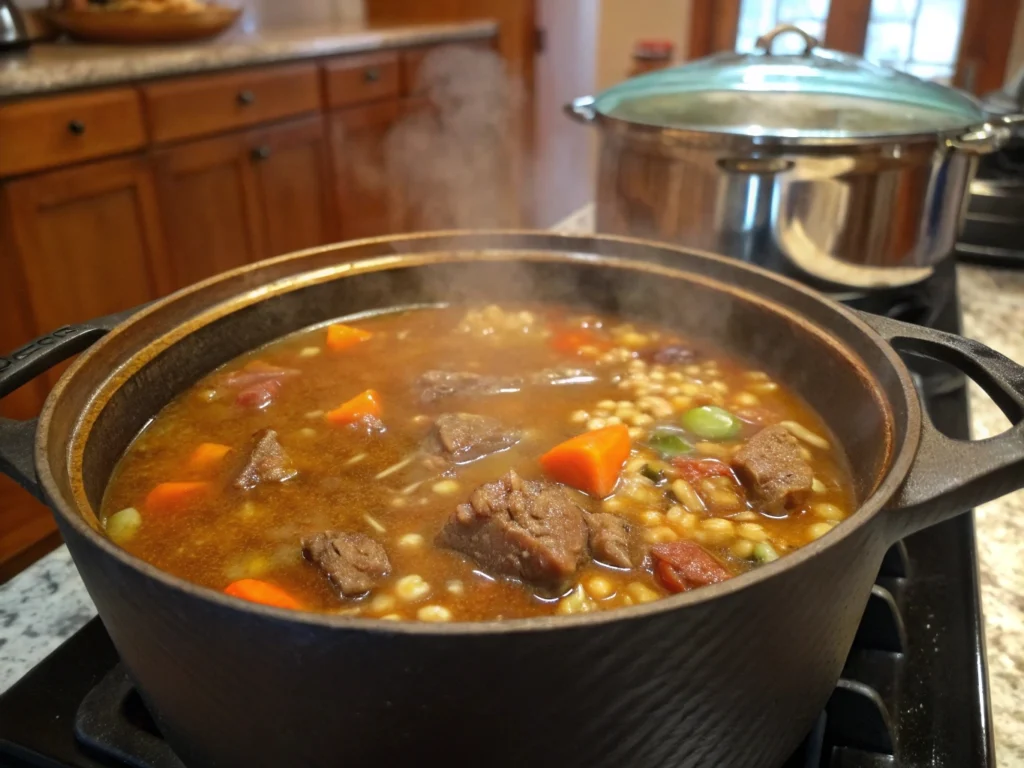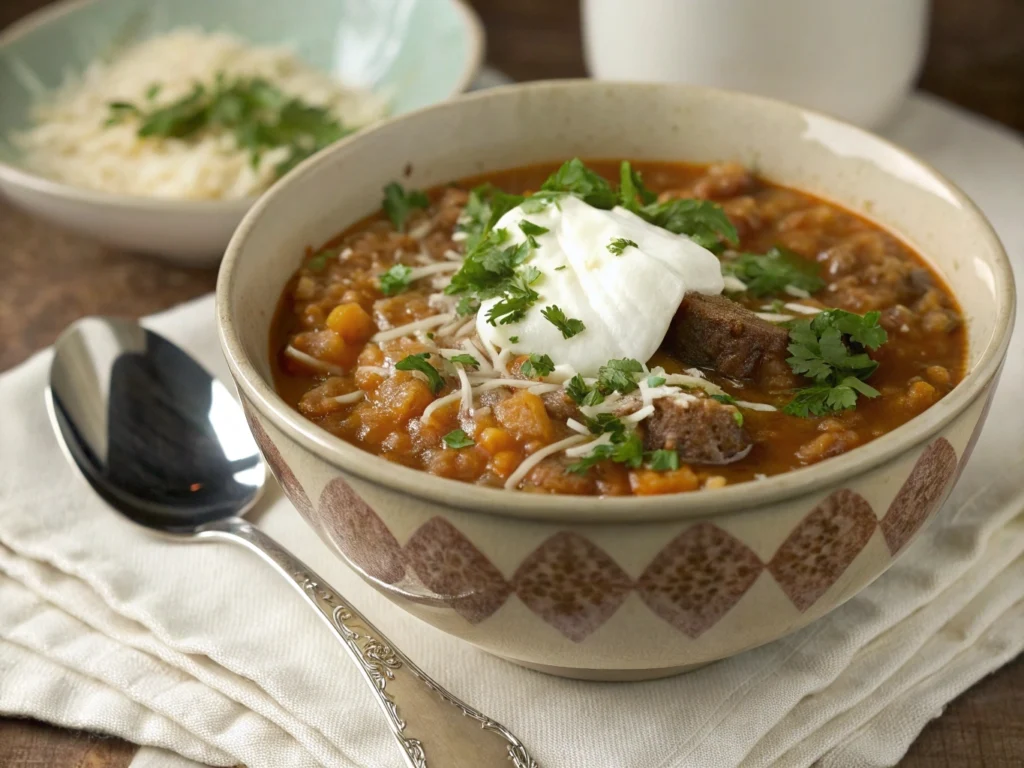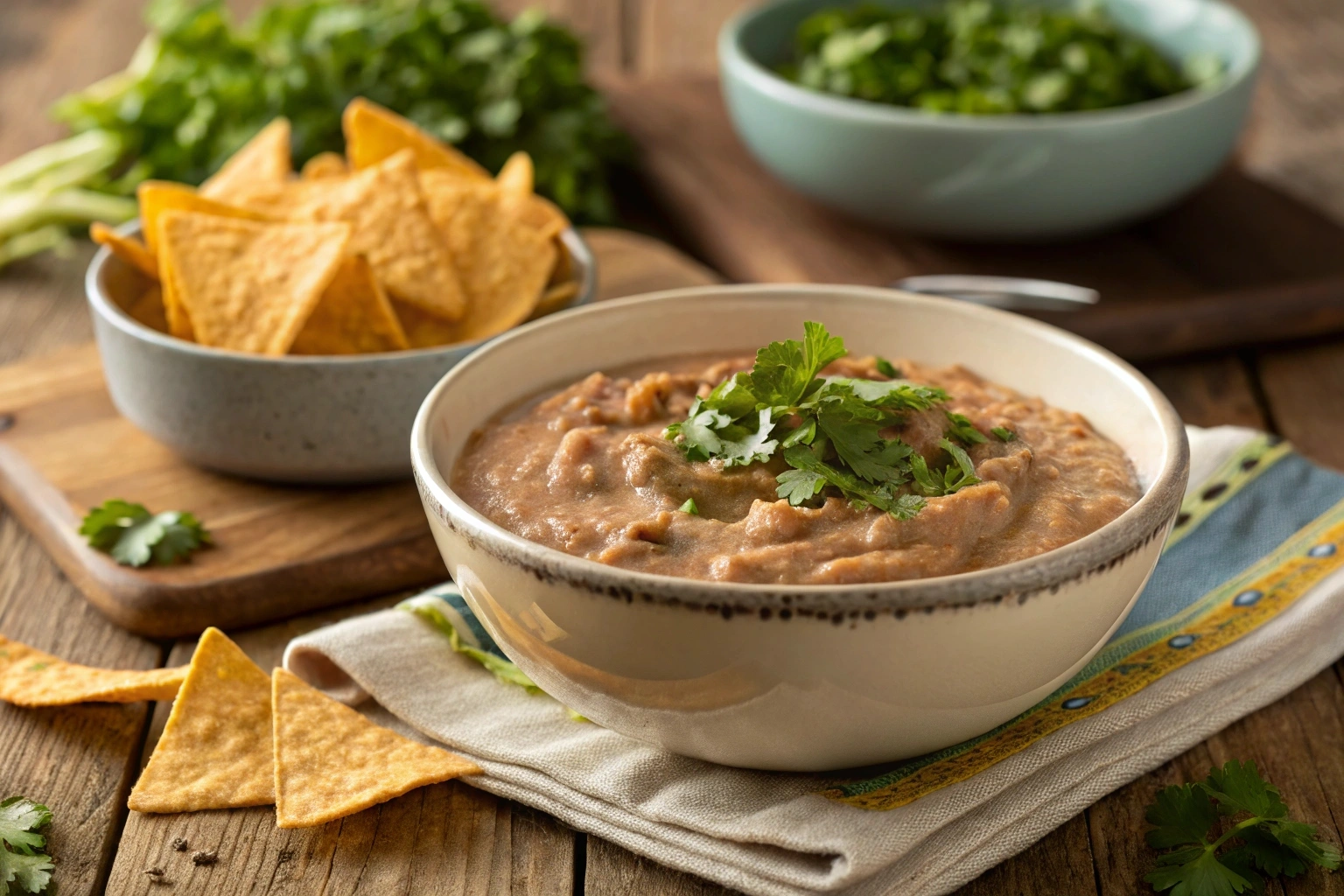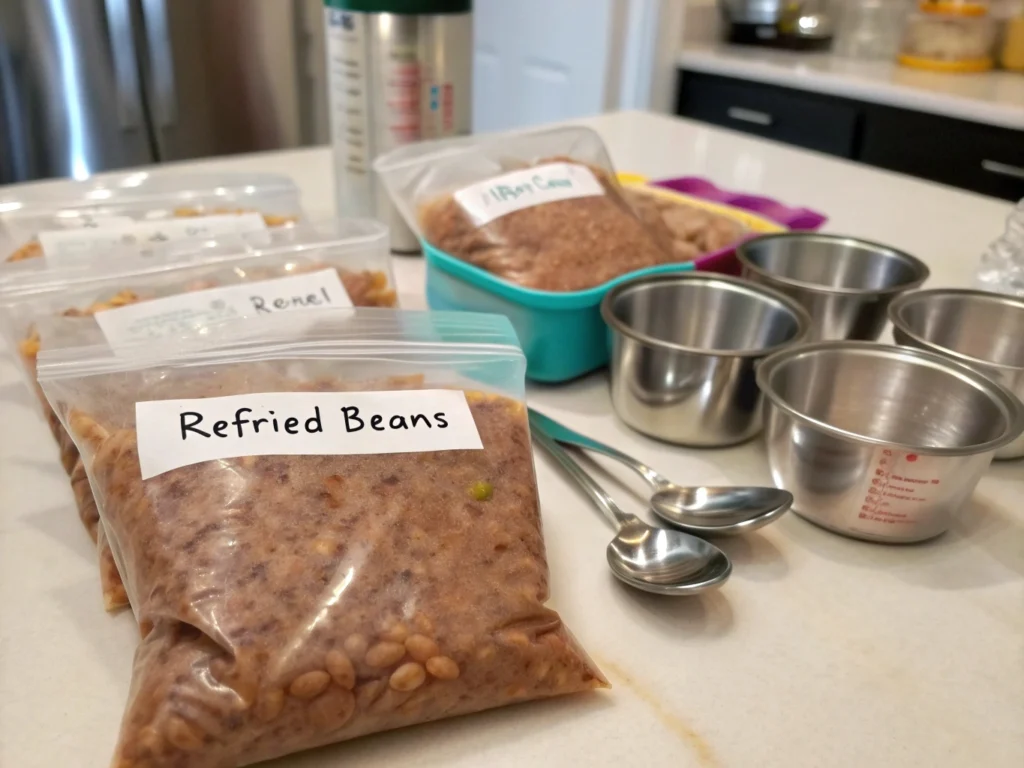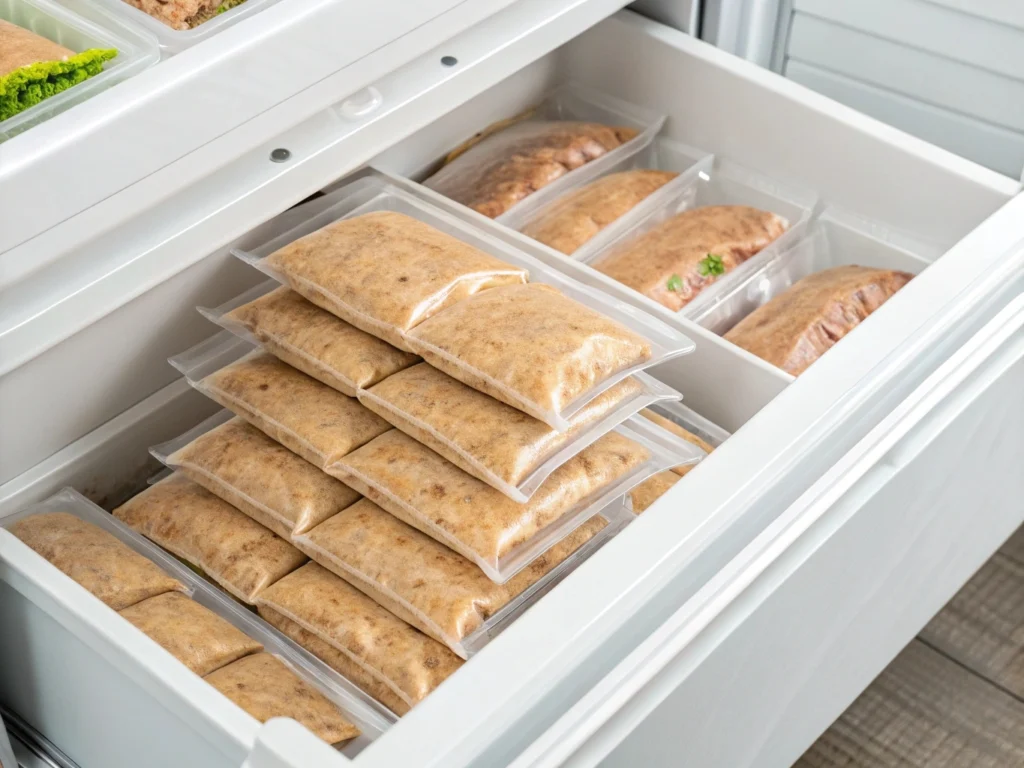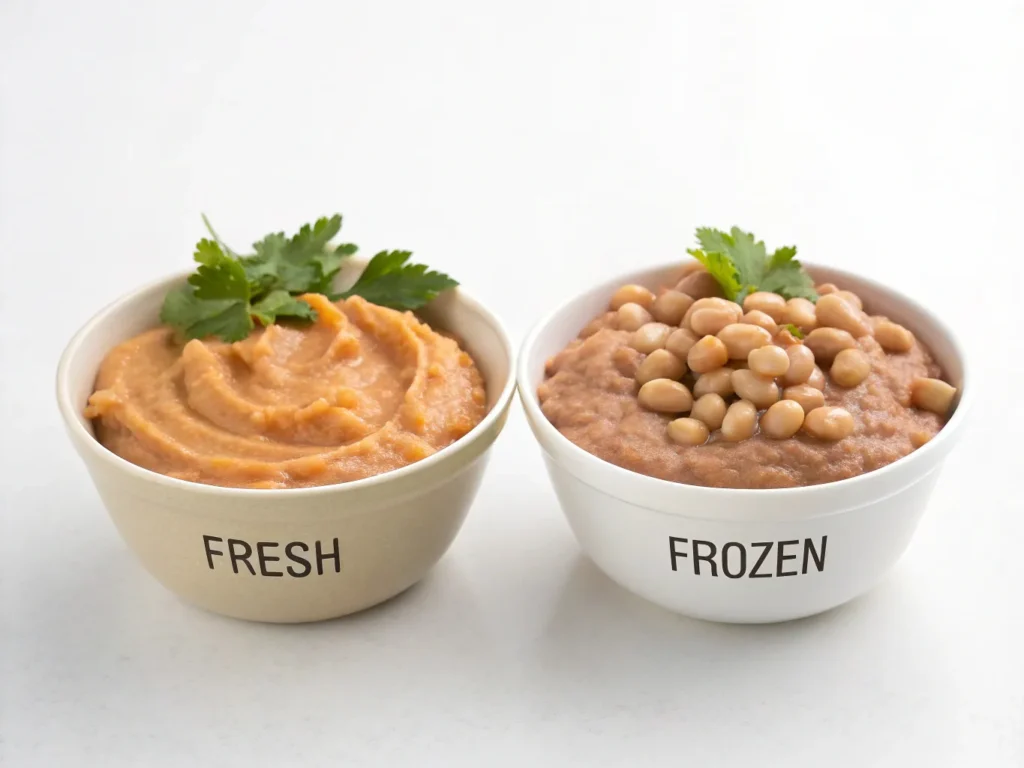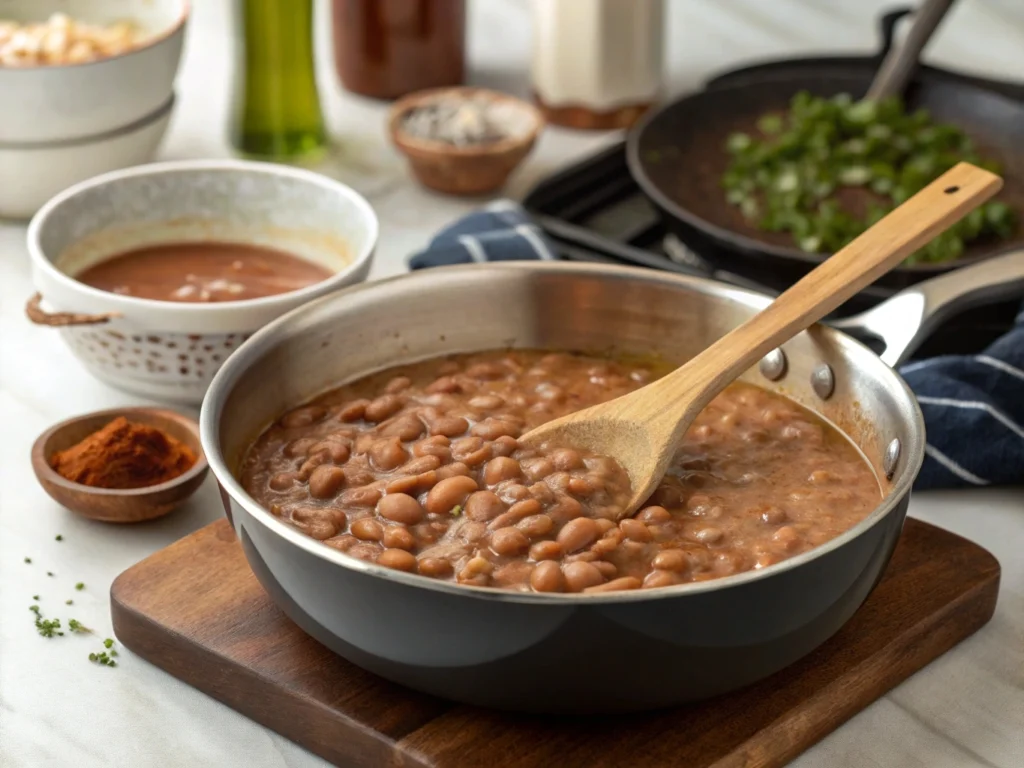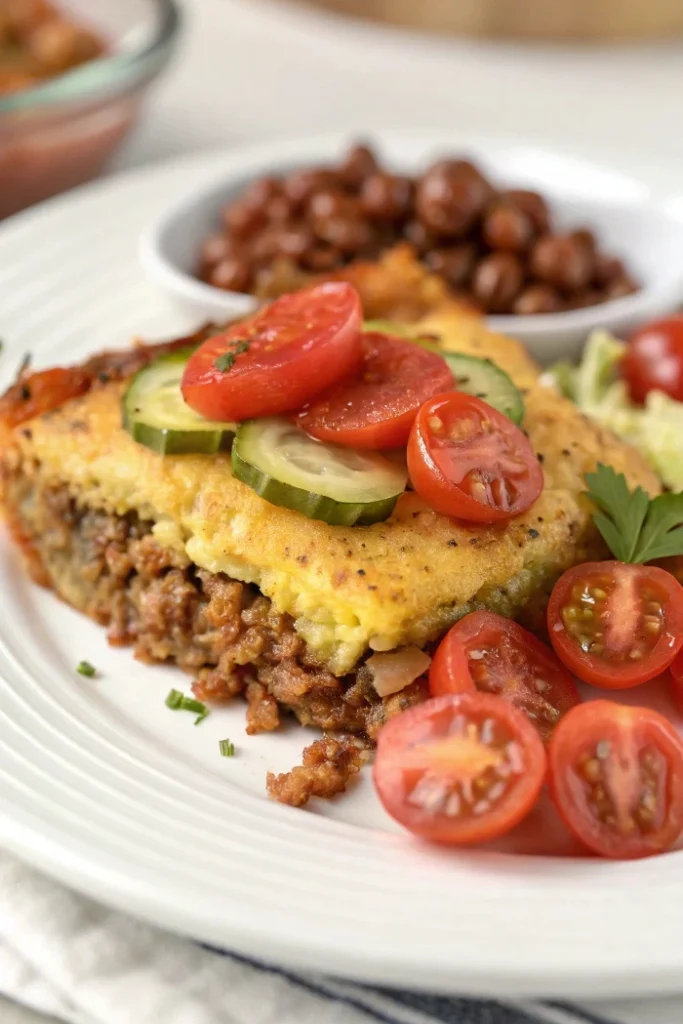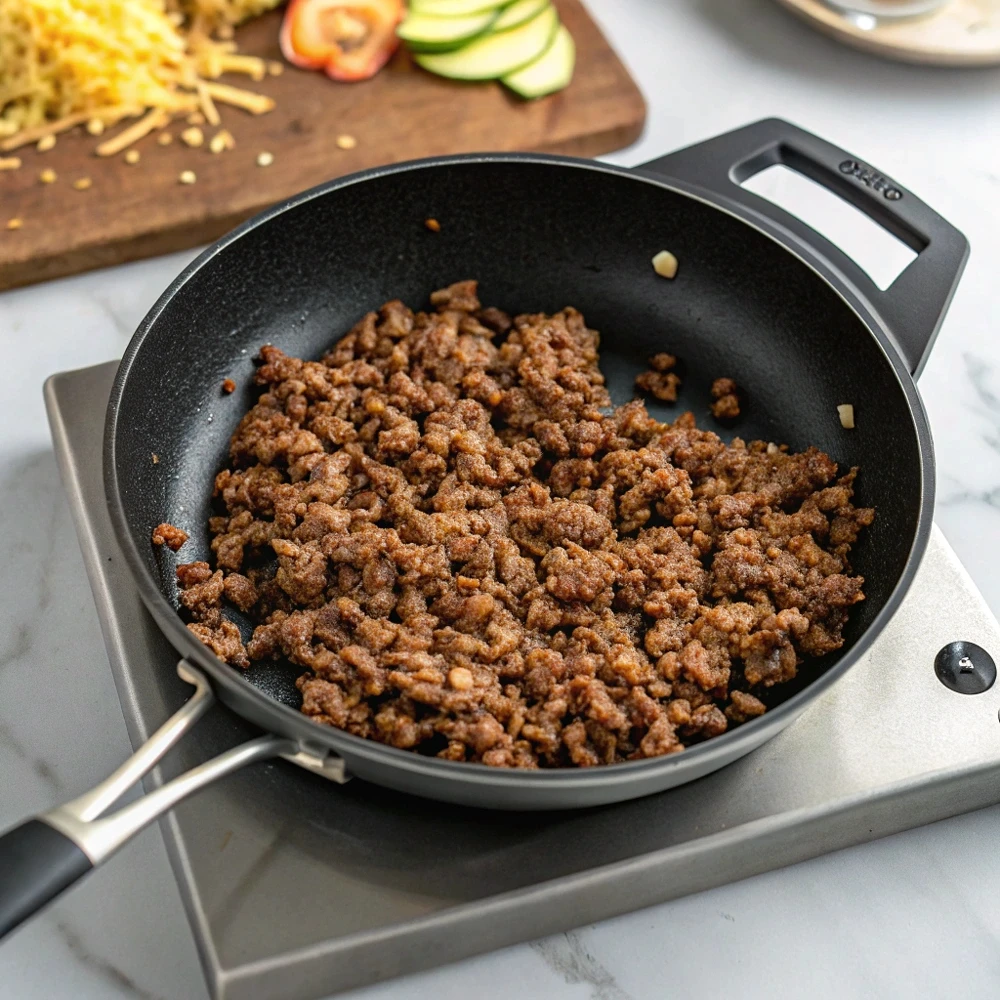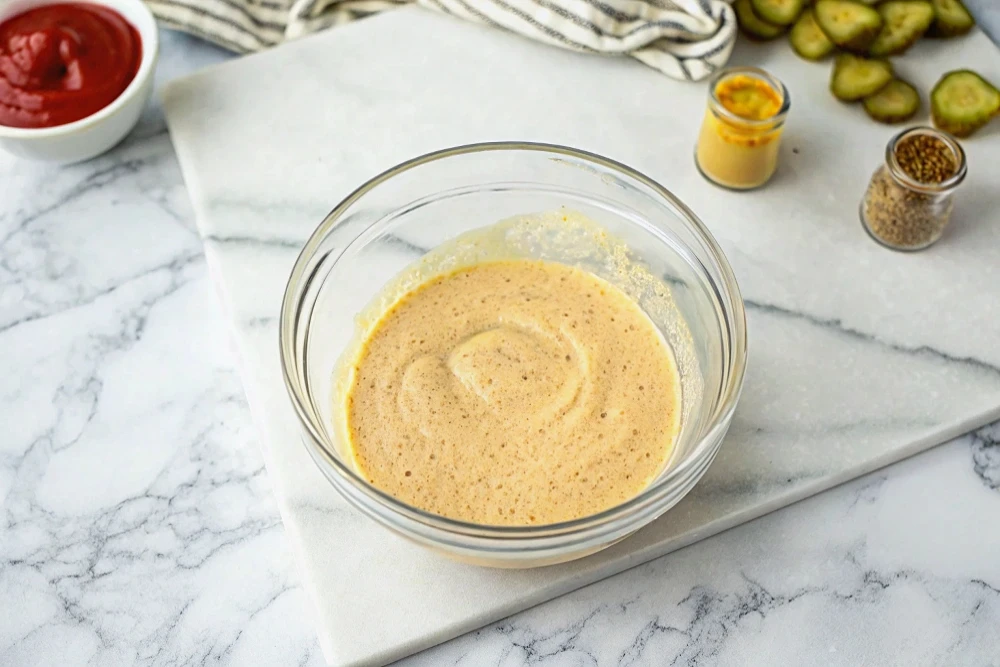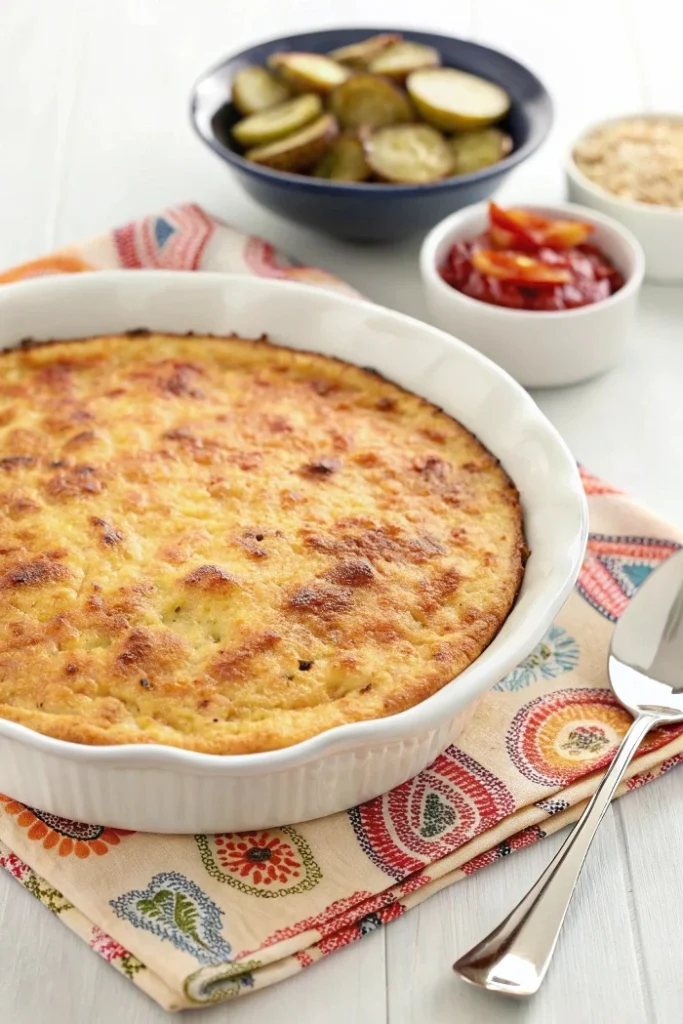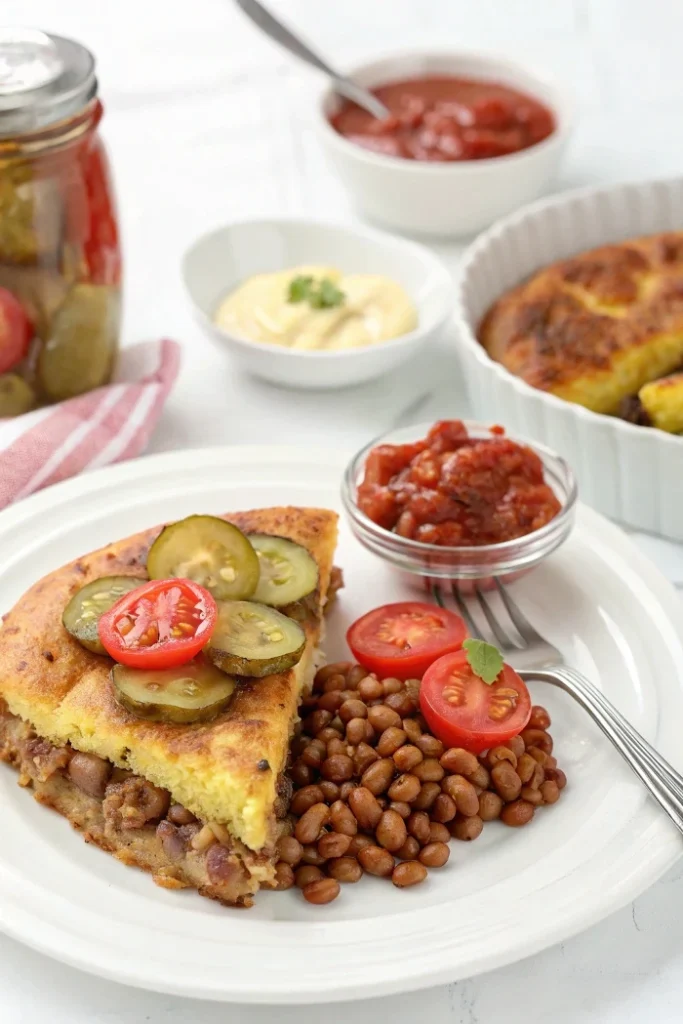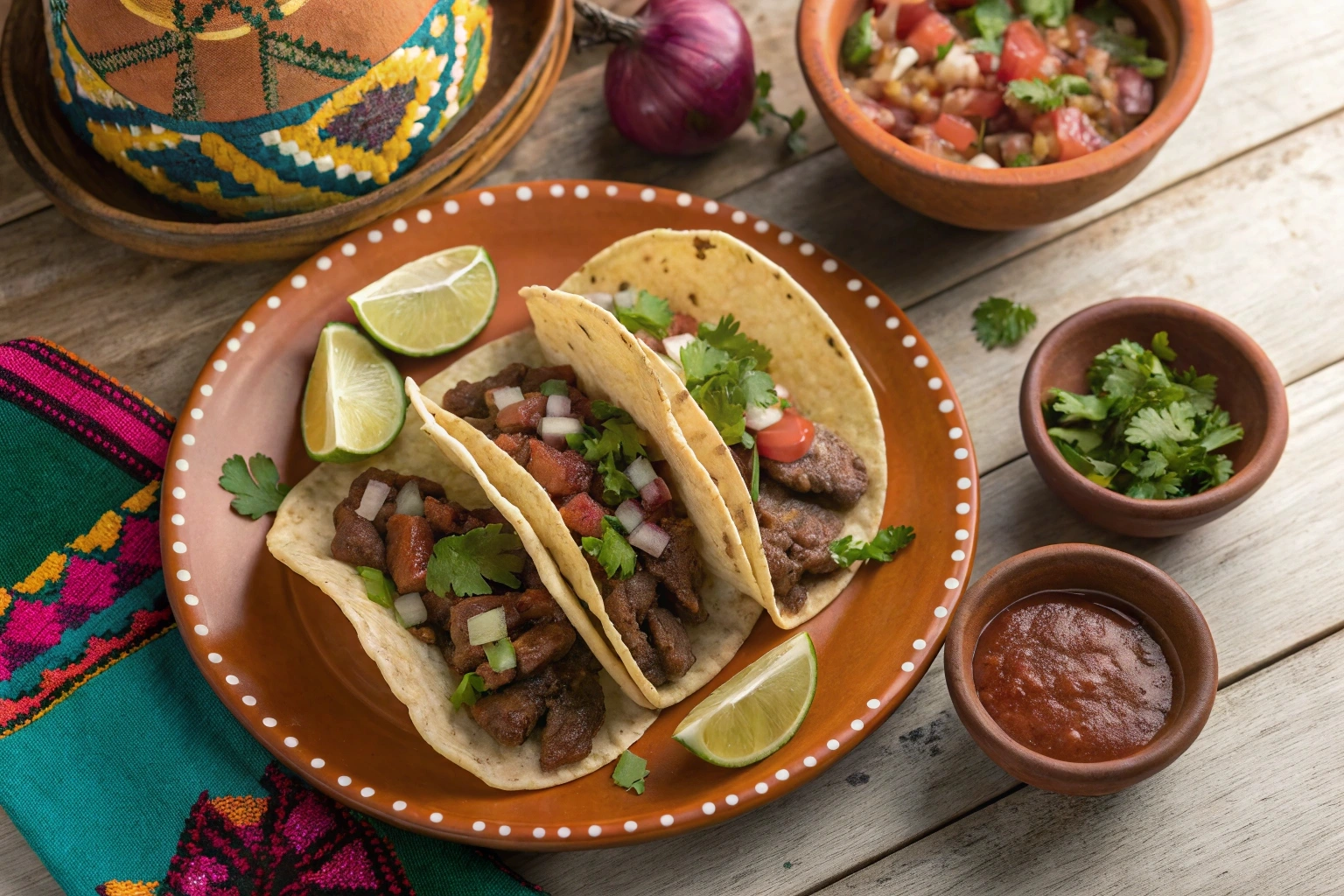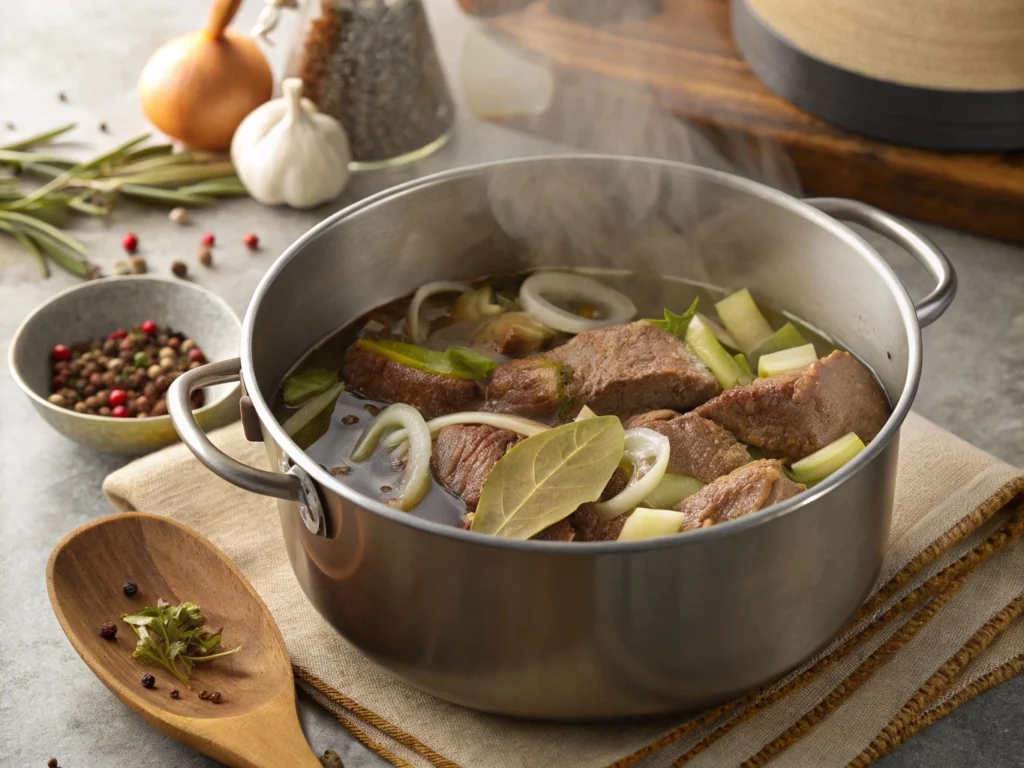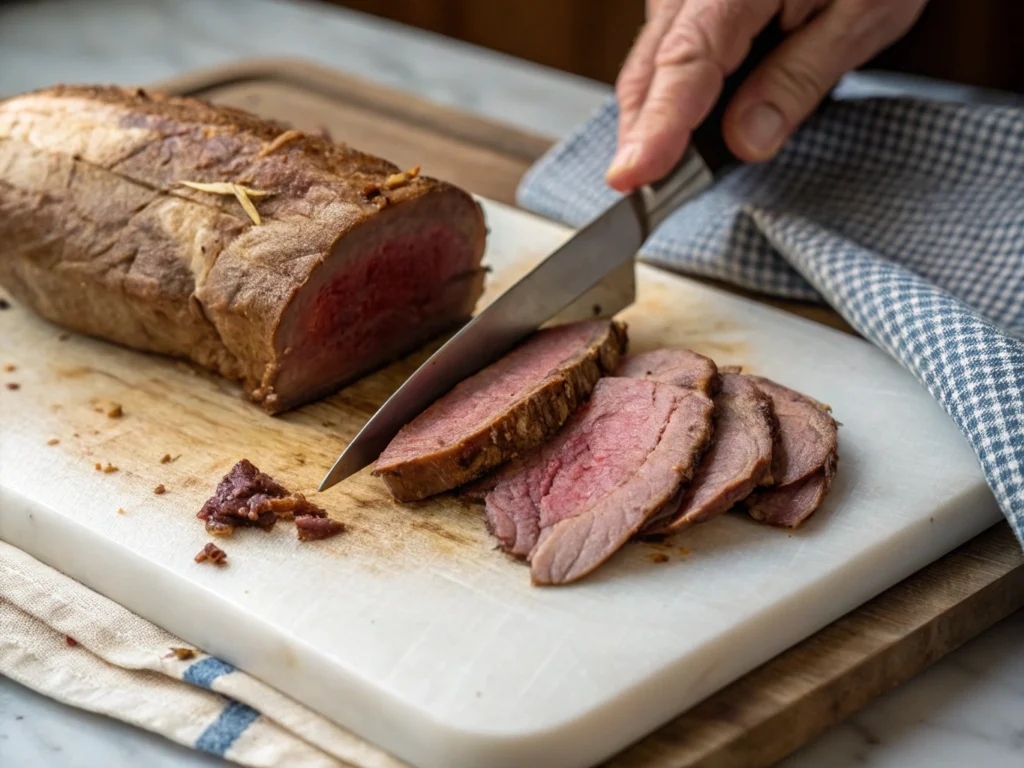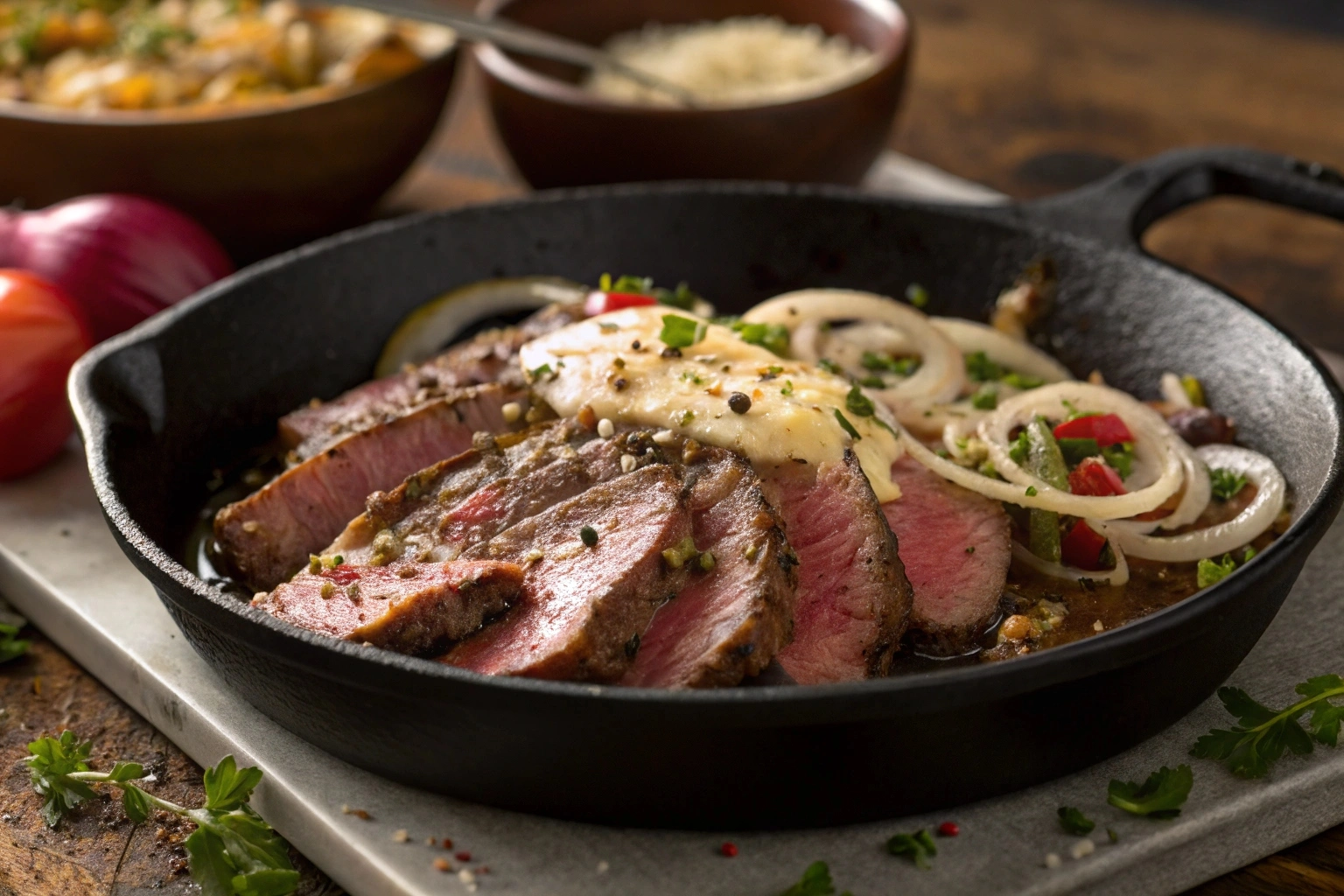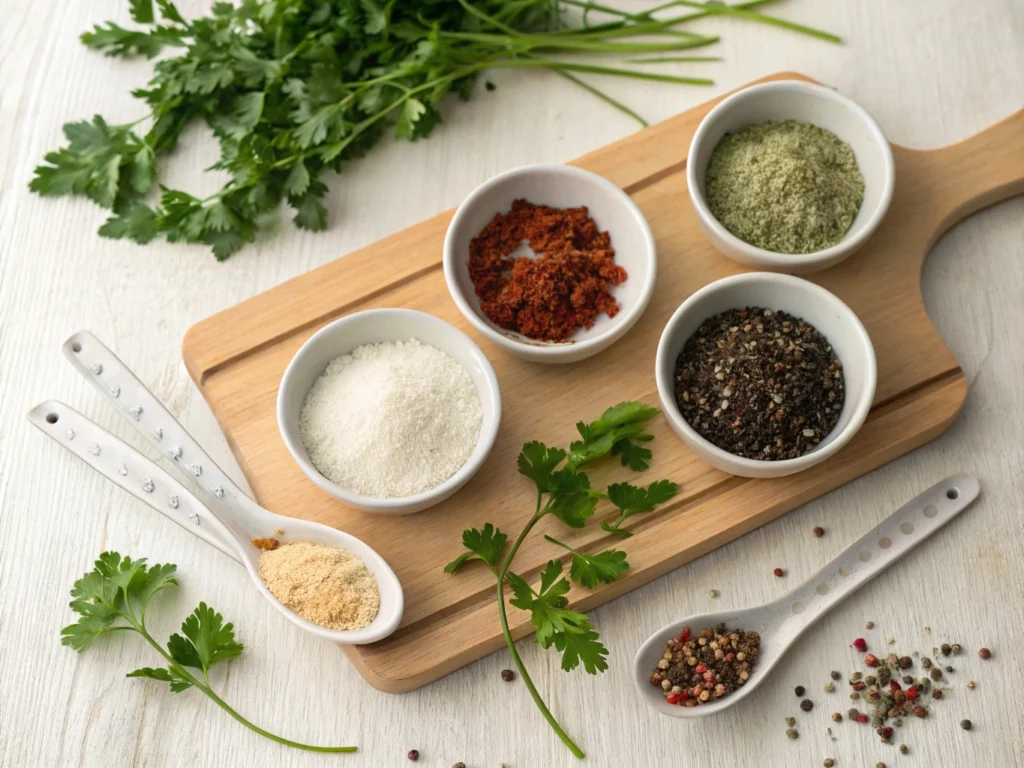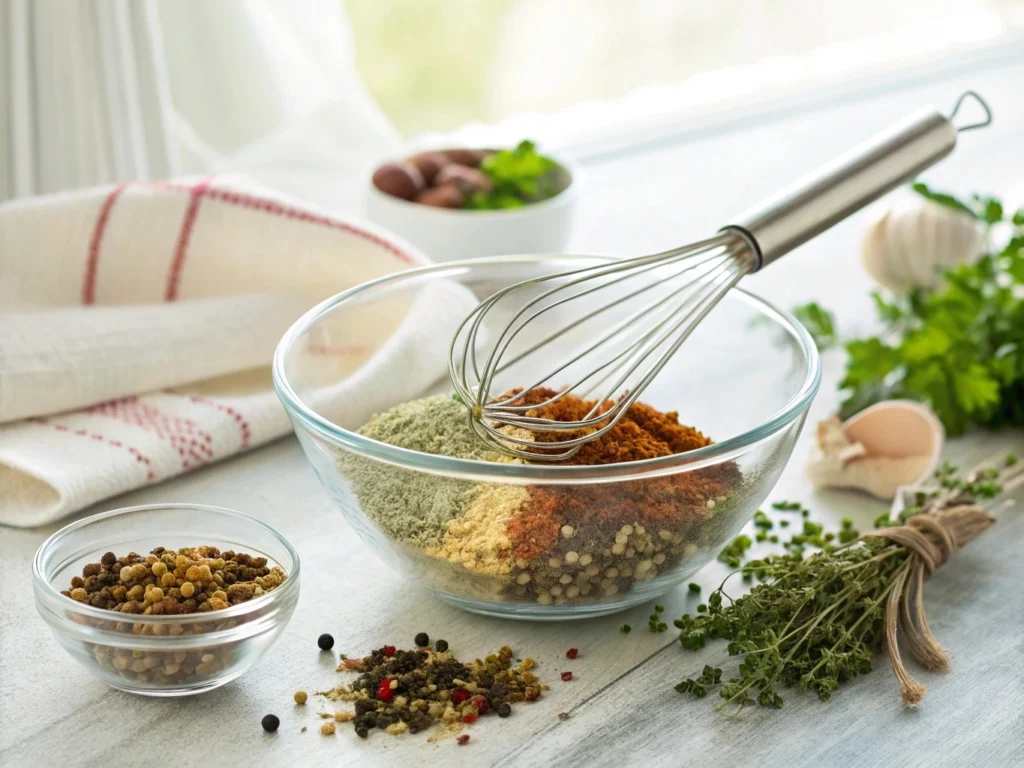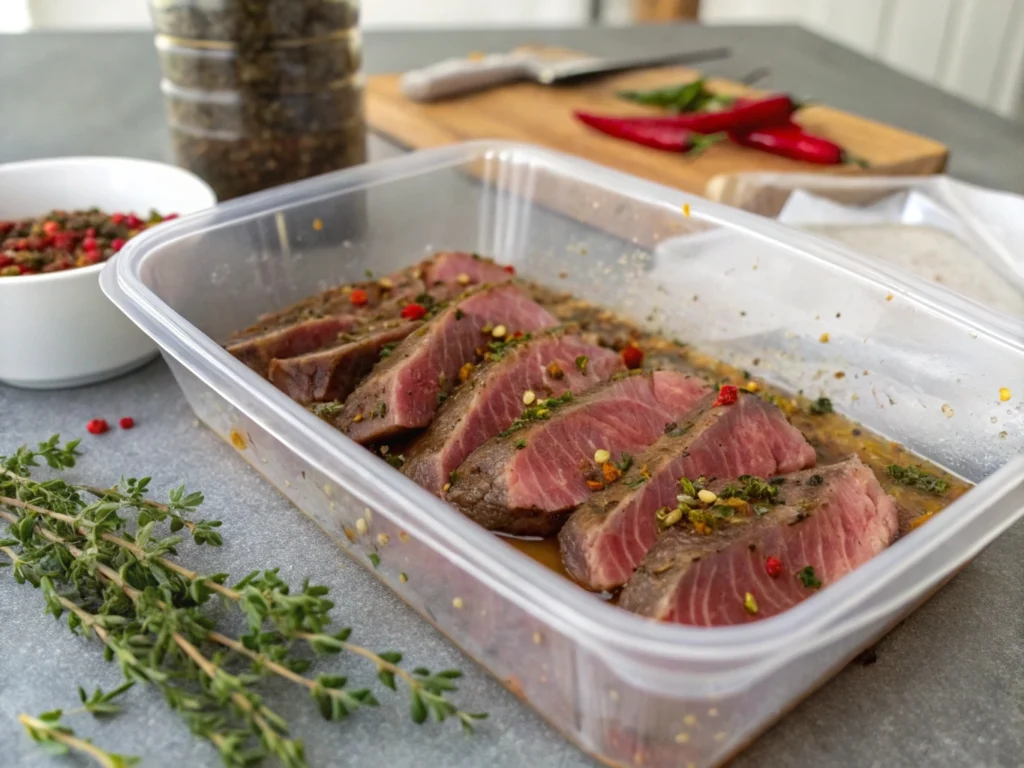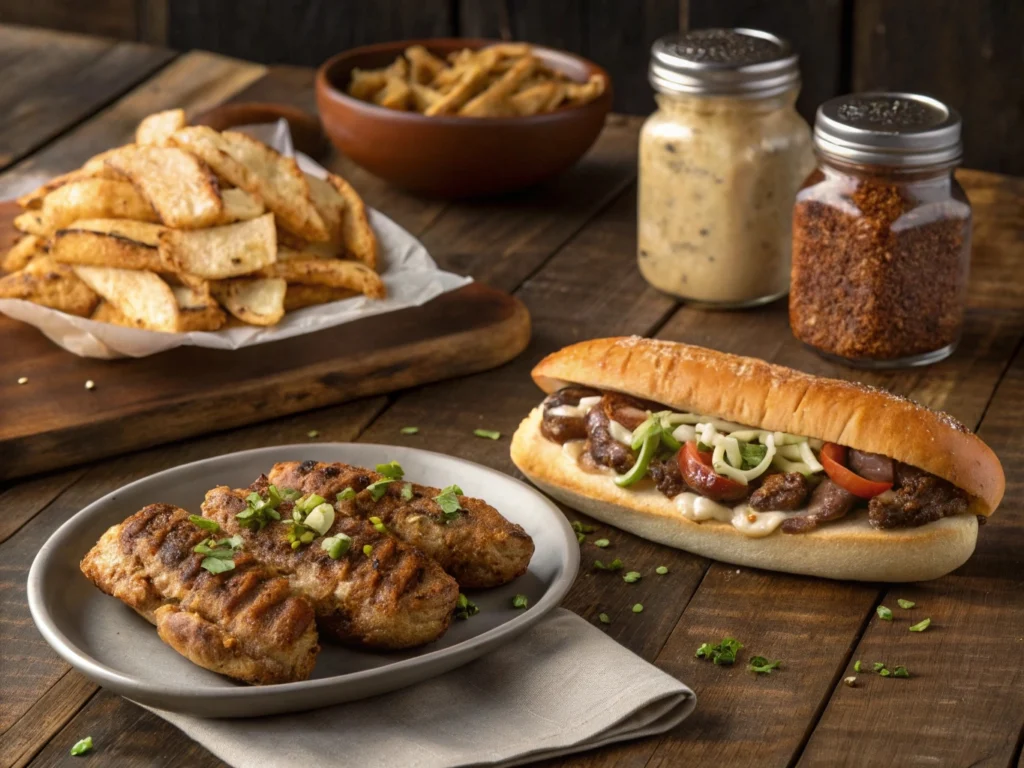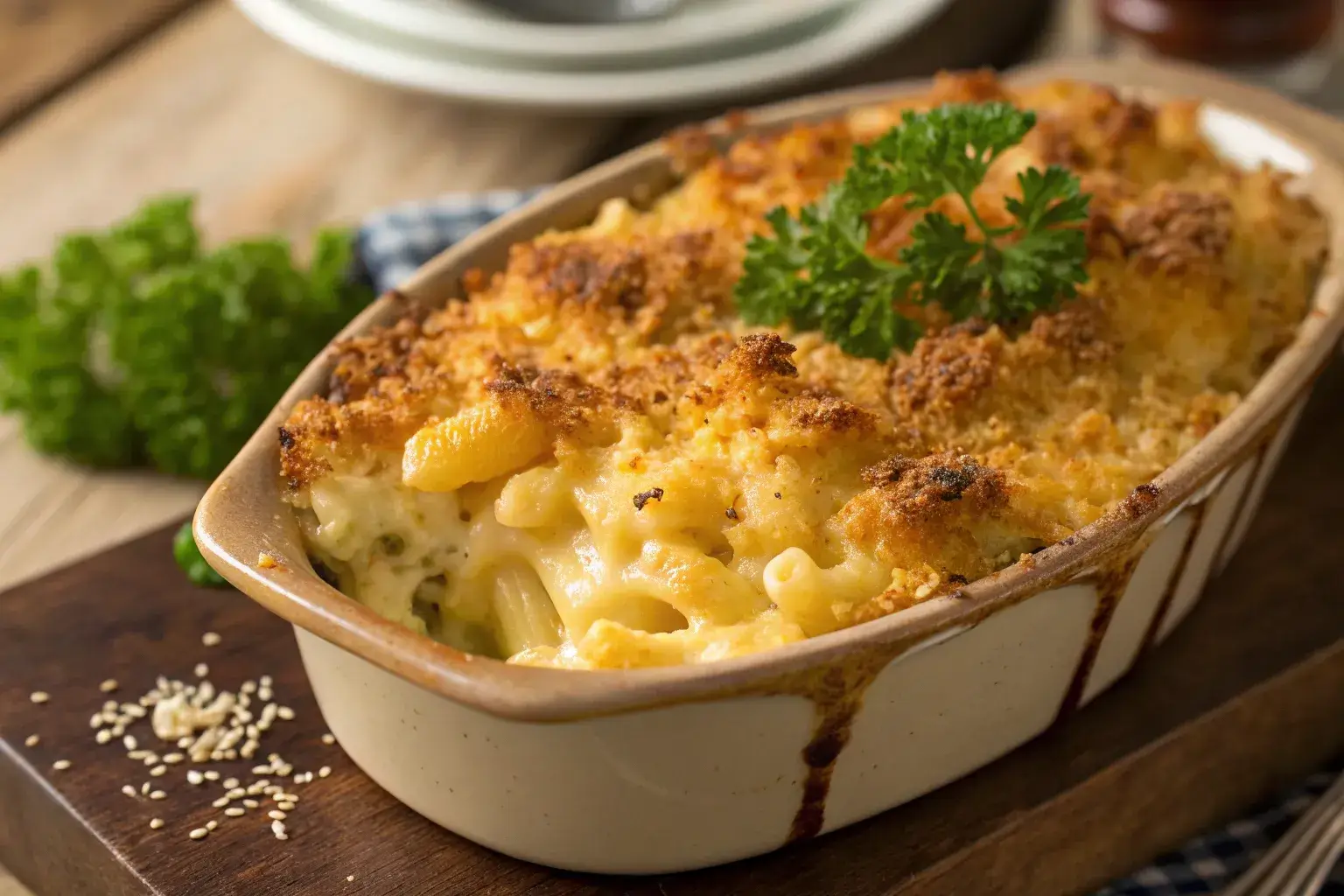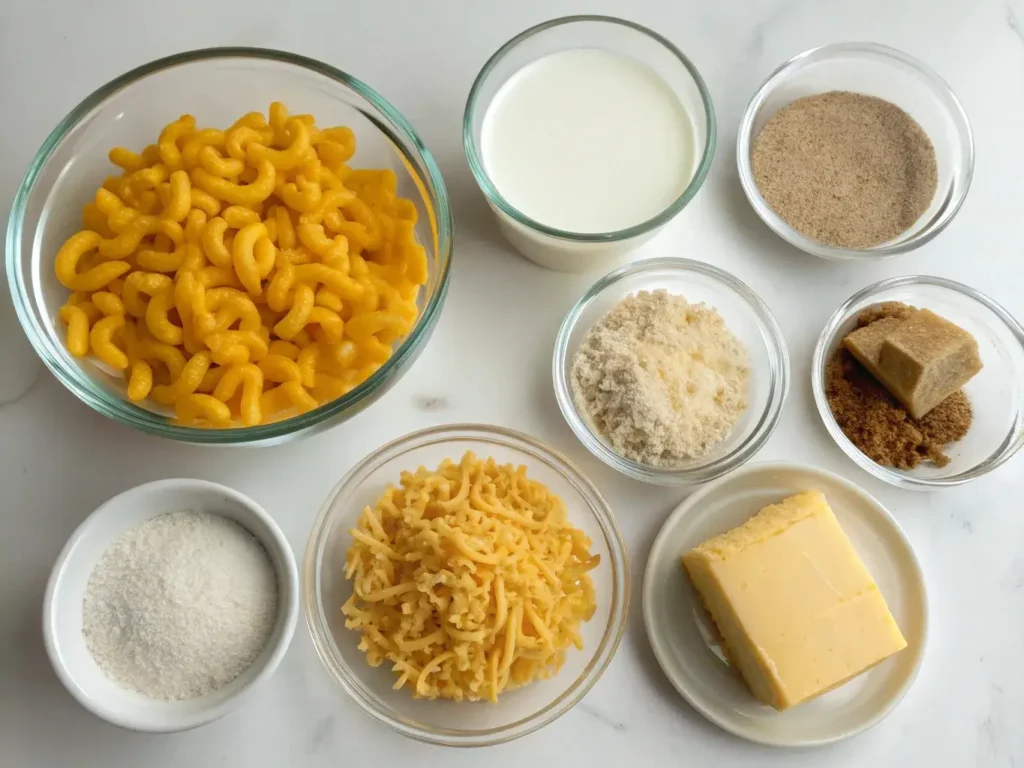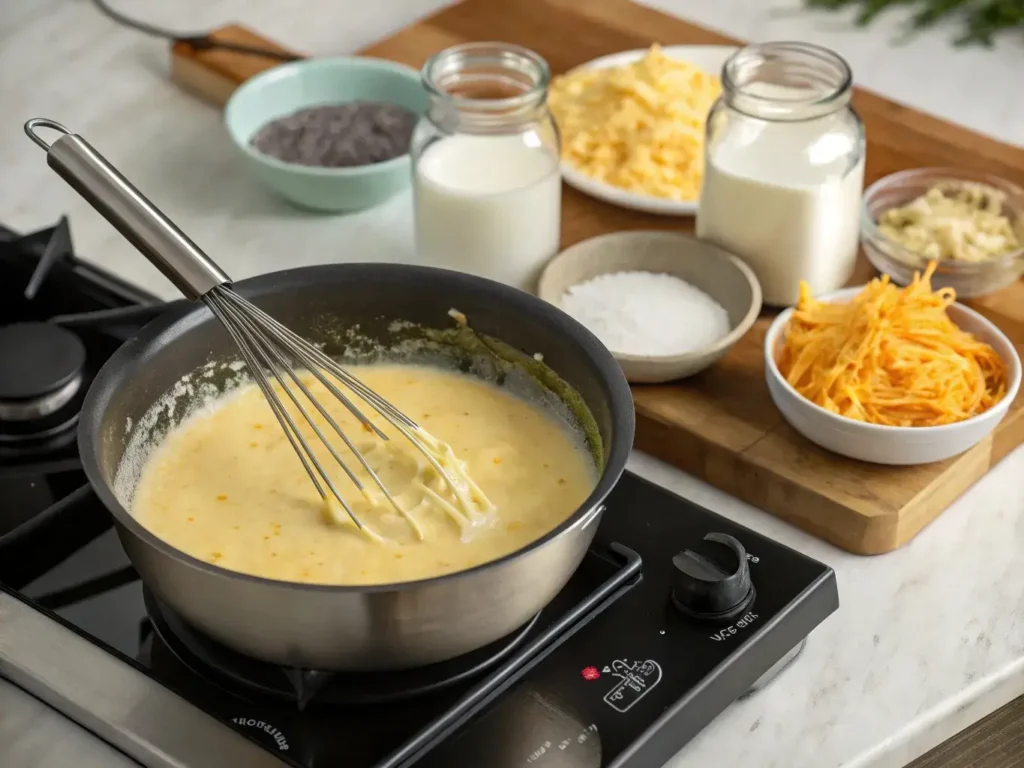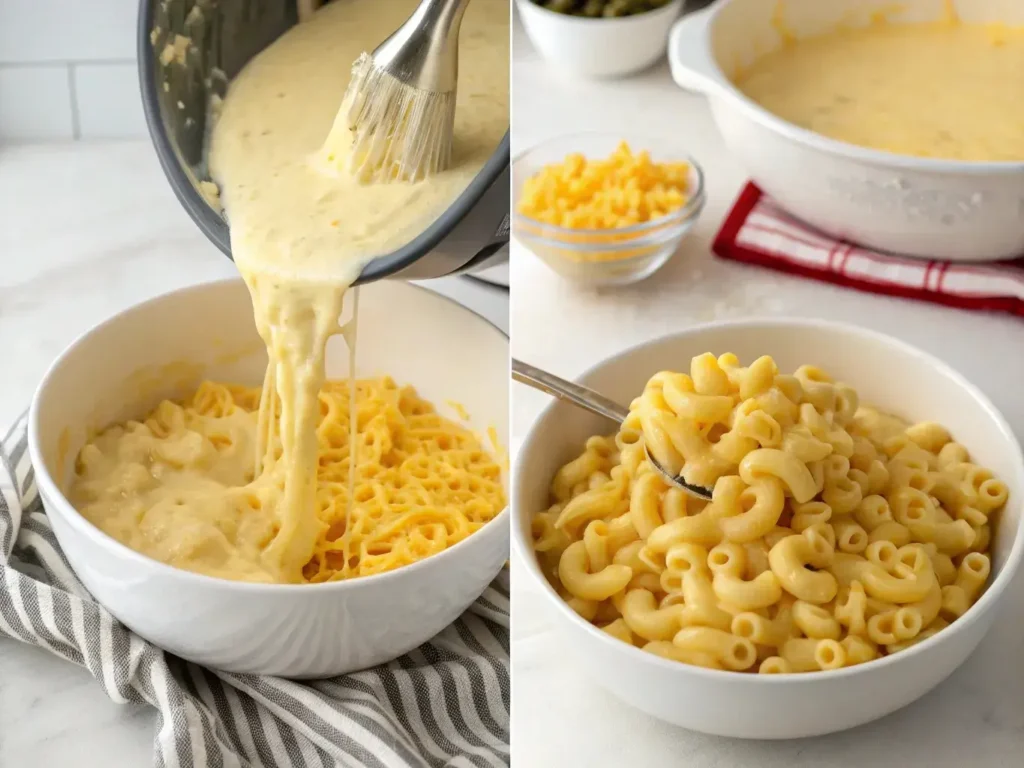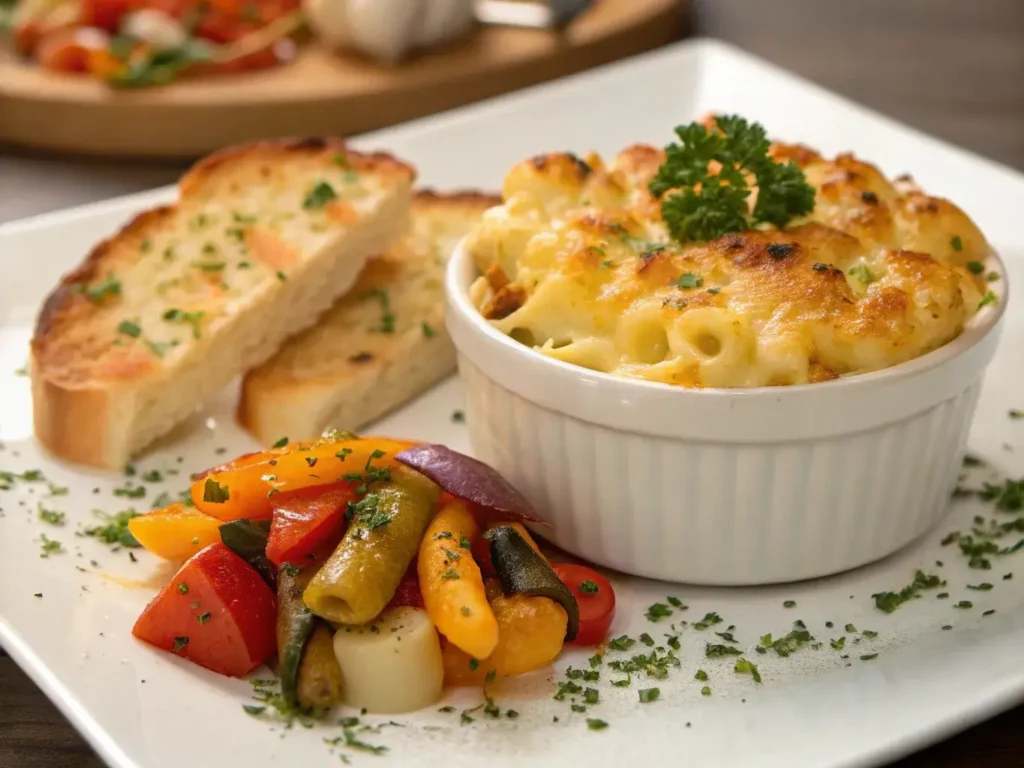Life’s too short for boring meals, don’t you think? That’s why these cheesy garlic chicken wraps are about to become your new favorite recipe. Picture this: tender, juicy chicken infused with savory garlic, melted cheese oozing from every bite, all wrapped up in a warm tortilla. Whether you need a quick lunch, a family-friendly dinner, or a grab-and-go snack, these wraps have you covered.
The best part? They’re ridiculously easy to make, perfect for those hectic days when you want something fast but flavorful. Add your favorite toppings, pair with a dipping sauce, and you’ve got a meal that feels fancy but takes just minutes to whip up. Ready to give your taste buds a treat? Let’s dive in!
Table of Contents
What Are Cheesy Garlic Chicken Wraps?
A Quick Introduction to Cheesy Garlic Chicken Wraps
Cheesy garlic chicken wraps are the perfect solution for anyone craving a quick and satisfying meal. These wraps combine tender, juicy chicken, melted cheese, and bold garlic flavors, all wrapped up in a soft tortilla. Whether you’re looking for a grab-and-go lunch, an easy dinner, or a dish to impress at a casual get-together, these wraps deliver every time.
What makes them so special? They’re versatile, delicious, and customizable. You can keep it simple with just the core ingredients or load them up with veggies, sauces, and extra cheese. No matter how you make them, these wraps are guaranteed to hit the spot!
Why Cheesy Garlic Chicken Wraps Are a Crowd-Pleaser
It’s no surprise that cheesy garlic chicken wraps are loved by everyone. They strike the perfect balance between indulgence and practicality. The rich, creamy cheese pairs perfectly with the savory garlic and tender chicken, making them a hit with kids and adults alike.
But what really sets them apart is their versatility. You can enjoy them hot or cold, as a full meal or a snack. Plus, they’re super easy to adapt for different preferences—add buffalo sauce for spice lovers, or swap in whole-grain tortillas for a healthier twist.
The Essential Ingredients Behind Their Flavor
The magic of cheesy garlic chicken wraps lies in their simple yet flavorful ingredients. Here’s what you’ll need to create them:
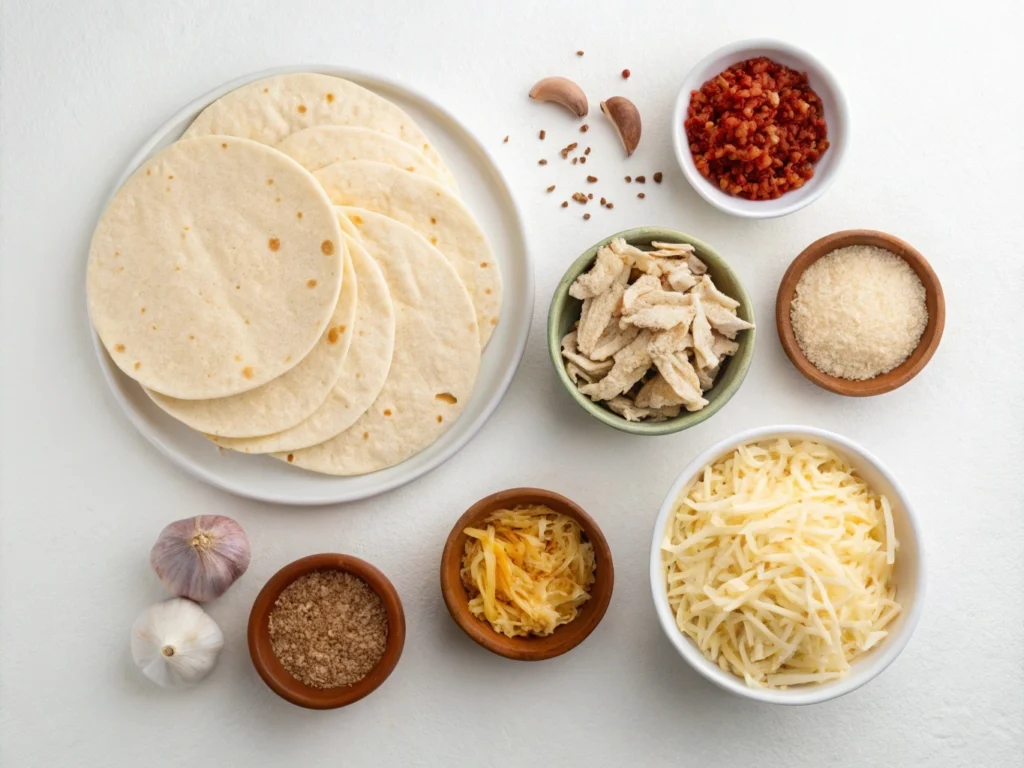
- Chicken: Grilled, shredded, or even leftover chicken works beautifully.
- Cheese: Opt for gooey varieties like mozzarella or sharp cheddar for bold flavor.
- Garlic: Fresh minced garlic or garlic powder enhances the dish’s savory profile.
- Tortillas: Flour tortillas are soft and pliable, but whole wheat or low-carb options are great too.
- Optional Add-Ins: Diced tomatoes, spinach, or even a drizzle of ranch dressing for an extra kick.
These ingredients come together to create a wrap that’s both comforting and satisfying.
How Cheesy Garlic Chicken Wraps Save Time in the Kitchen
When you’re short on time, cheesy garlic chicken wraps are a lifesaver. With just a handful of ingredients and minimal prep, you can have a delicious meal on the table in under 30 minutes.
Compared to more complicated dishes, these wraps require only basic cooking skills, making them ideal for busy families or beginner cooks. Plus, they’re a great way to use up leftovers, like rotisserie chicken or extra veggies from the fridge.
For a full guide on quick meals, check out this helpful article on time-saving cooking tips from Food Network.
How to Make Cheesy Garlic Chicken Wraps at Home
Step 1: Gather the Ingredients
The first step to creating the perfect cheesy garlic chicken wraps is gathering your ingredients. Here’s what you’ll need:
- Chicken: Grilled, shredded, or rotisserie chicken works best.
- Cheese: Use mozzarella, cheddar, or even a blend for that gooey texture.
- Garlic: Fresh minced garlic or garlic powder adds bold flavor.
- Tortillas: Soft flour tortillas are a classic choice, but whole wheat or gluten-free options work too.
- Seasonings: Salt, pepper, and a pinch of paprika or Italian herbs.
- Optional Add-Ins: Diced tomatoes, baby spinach, or a drizzle of ranch dressing.
Having everything ready before you start cooking makes the process smooth and stress-free.
Step 2: Prepare the Garlic Chicken Filling
To create a flavorful filling for your cheesy garlic chicken wraps, follow these simple steps:
- Heat a skillet over medium heat and add a tablespoon of olive oil.
- Sauté minced garlic until fragrant, being careful not to burn it.
- Add the chicken and season with salt, pepper, and your chosen spices (paprika or Italian herbs).
- Stir in a handful of shredded cheese and mix until the chicken is evenly coated and the cheese is melted.
This step creates a savory, cheesy filling that’s bursting with garlic flavor—perfect for wraps!
Step 3: Assemble the Wraps
Now it’s time to bring your cheesy garlic chicken wraps to life. Here’s how to assemble them:
- Lay a tortilla flat on a clean surface.
- Spoon the garlic chicken mixture onto the center of the tortilla.
- Add any optional toppings, such as spinach, tomatoes, or a drizzle of ranch dressing.
- Fold the sides of the tortilla inward, then roll it tightly from one end to the other.
For extra flair, you can sprinkle a little cheese on the outside of the wrap before toasting.
Step 4: Toast and Serve
To take your wraps to the next level, toast them until they’re golden and crispy. You can do this in a skillet, a sandwich press, or even the oven. Here’s how:
- Heat a dry skillet over medium heat.
- Place the wrap seam-side down and toast for 2–3 minutes per side, or until the tortilla is crispy and the cheese inside is fully melted.
- Slice the wrap diagonally for easier handling and a professional look.
Serve your wraps immediately with a side of your favorite dipping sauce, such as garlic aioli, ranch, or sriracha mayo.
Delicious Variations of Cheesy Garlic Chicken Wraps
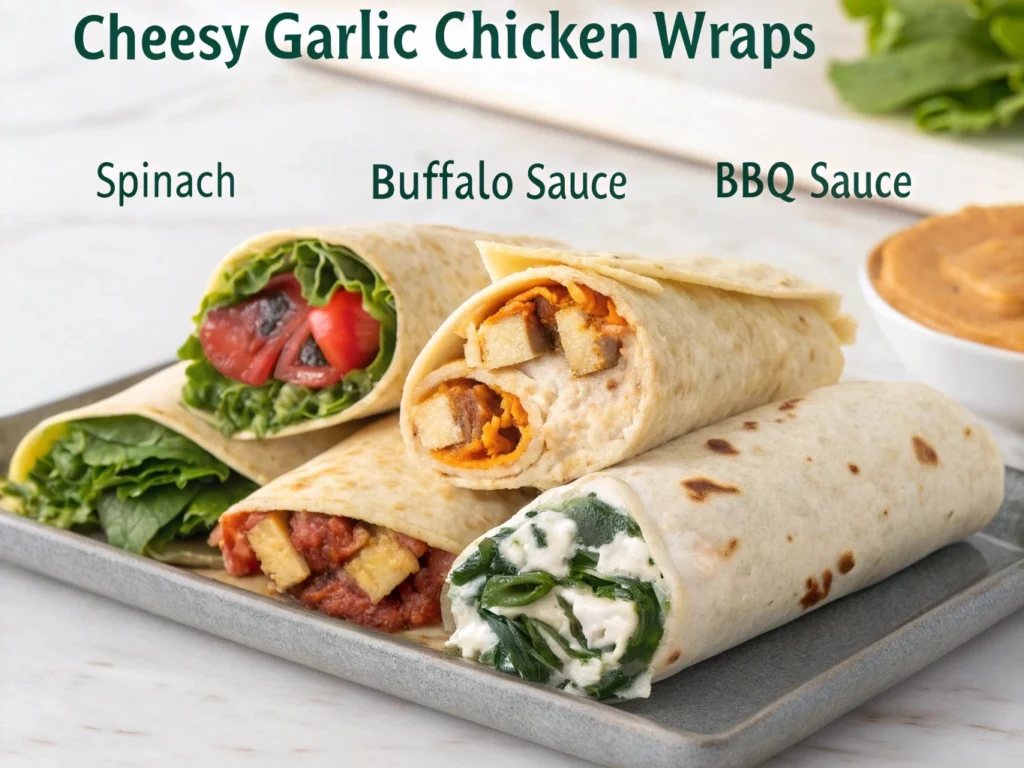
Cheesy Garlic Chicken Wraps with Spinach and Mushrooms
For a healthier twist, add fresh spinach and sautéed mushrooms to your cheesy garlic chicken wraps. The earthy flavor of mushrooms pairs beautifully with the savory garlic and creamy cheese, while spinach adds a pop of color and extra nutrients.
To prepare, sauté mushrooms with garlic in a splash of olive oil until tender. Layer the spinach and mushrooms over the garlic chicken mixture before wrapping. This variation is perfect for those who want a balanced yet indulgent meal.
Buffalo-Style Cheesy Garlic Chicken Wraps
Craving something spicy? Transform your cheesy garlic chicken wraps into a bold buffalo-style version. Toss the cooked chicken in your favorite buffalo sauce before assembling the wraps.
For an extra creamy touch, add ranch or blue cheese dressing inside the tortilla. The combination of tangy buffalo sauce, melted cheese, and garlic creates a flavor explosion that’s hard to resist. This variation is ideal for game nights or casual gatherings.
Cheesy Garlic BBQ Chicken Wraps
If you love sweet and smoky flavors, this variation is a must-try. Mix barbecue sauce into the chicken filling before adding it to the wraps. The smoky sweetness of the BBQ sauce perfectly complements the rich garlic and cheese.
For extra crunch, include a handful of coleslaw or crispy fried onions as a topping. These cheesy garlic chicken wraps are sure to impress at picnics, potlucks, or family dinners.
Vegetarian Cheesy Garlic Wraps with Roasted Veggies
Who says cheesy garlic chicken wraps can’t be vegetarian? Swap the chicken for roasted veggies like bell peppers, zucchini, and eggplant. The roasted veggies bring a smoky flavor and hearty texture that pairs beautifully with garlic and cheese.
Simply roast your veggies with olive oil, garlic, salt, and pepper until tender. Layer them in the tortilla with cheese and any additional toppings you like. This version is perfect for vegetarians or anyone looking to cut back on meat without sacrificing flavor.
Best Pairings and Serving Ideas for Cheesy Garlic Chicken Wraps
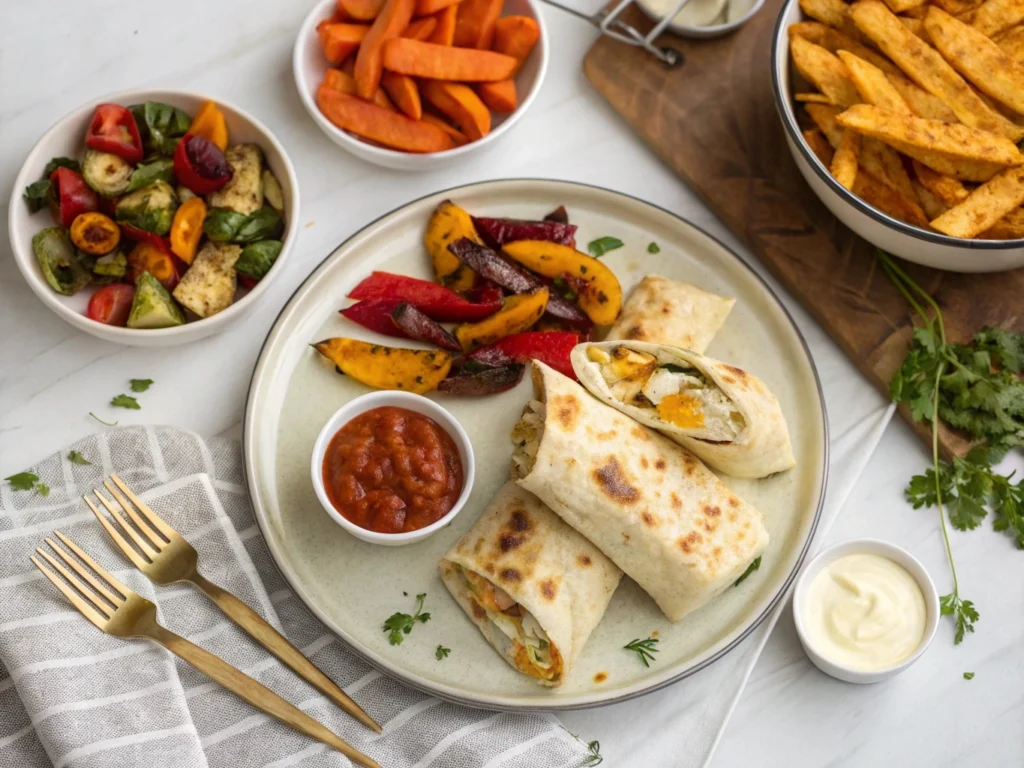
Side Dishes to Complete the Meal
Pairing your cheesy garlic chicken wraps with the right sides can turn a simple meal into a feast. Crispy sweet potato fries or a light Caesar salad are classic choices that balance the rich, garlicky flavors of the wraps.
For a healthier option, try roasted vegetables like broccoli or asparagus. Their natural sweetness and slight crunch perfectly complement the creamy cheese and tender chicken. If you’re feeling indulgent, serve with a side of mac and cheese or creamy mashed potatoes for an extra comforting meal.
Dipping Sauces to Elevate Flavor
Adding a flavorful dipping sauce takes your cheesy garlic chicken wraps to the next level. Garlic aioli or ranch dressing enhances the wraps’ savory profile, while sriracha mayo adds a spicy kick.
For a tangy contrast, consider marinara or a zesty lemon-herb yogurt dip. These sauces not only boost flavor but also make the wraps even more enjoyable for dipping enthusiasts.
Beverage Pairings for Every Occasion
Beverages can make or break a meal, and cheesy garlic chicken wraps are no exception. For a casual lunch, pair your wraps with iced tea or sparkling water infused with fresh citrus.
If you’re serving them for dinner, light white wines like Sauvignon Blanc or crisp beers such as lagers work wonderfully. Prefer non-alcoholic options? Freshly squeezed lemonade or a cucumber-mint cooler offers refreshing flavors that balance the wraps’ richness.
Tips for Storing and Reheating Leftovers
If you have leftover cheesy garlic chicken wraps, don’t worry—they’re easy to store and reheat. Wrap each one tightly in aluminum foil or place them in an airtight container. Store them in the refrigerator for up to three days.
To reheat, use an oven or skillet to maintain their crispy texture. Avoid microwaving, as it can make the tortillas soggy. For added freshness, consider adding a sprinkle of cheese or a few fresh veggies before serving.
FAQs
How do you make chicken wraps not soggy?
To prevent your cheesy garlic chicken wraps from becoming soggy, it’s essential to avoid excess moisture. Pat the chicken dry before cooking and don’t overdo it with wet ingredients like sauces or dressings. Instead, use small amounts of creamy elements like garlic aioli or ranch.
Additionally, layer the ingredients strategically—start with cheese or leafy greens as a base to create a barrier between the tortilla and moist fillings. Toasting the wraps in a skillet or oven also helps maintain a crispy texture, even if they sit for a while.
What goes well with chicken wraps?
Cheesy garlic chicken wraps pair beautifully with a variety of sides and sauces. For a lighter option, serve them with a fresh salad, roasted veggies, or a fruit bowl. If you’re craving something hearty, try pairing the wraps with sweet potato fries, creamy coleslaw, or even a small bowl of soup.
For dipping sauces, garlic aioli, spicy sriracha mayo, or tangy marinara are excellent choices that elevate the flavor profile of the wraps. These combinations create a balanced and satisfying meal.
Are chicken wraps healthy?
Yes, chicken wraps, including cheesy garlic chicken wraps, can be healthy depending on how they’re prepared. By using grilled or baked chicken, whole-grain tortillas, and fresh vegetables, you can create a nutritious and well-rounded meal.
To reduce calories and fat, opt for low-fat cheese and lighter dressings. Additionally, incorporating nutrient-rich add-ins like spinach, avocado, or bell peppers boosts the wrap’s health benefits. The beauty of chicken wraps lies in their flexibility, allowing you to tailor them to your dietary needs without sacrificing flavor.
How to assemble a chicken wrap?
Assembling cheesy garlic chicken wraps is simple and ensures a mess-free meal:
- Lay the tortilla flat on a clean surface.
- Spread a thin layer of sauce or dressing evenly across the center of the tortilla.
- Add a portion of the cheesy garlic chicken filling, followed by your choice of toppings like shredded lettuce, diced tomatoes, or avocado slices.
- Fold in the sides of the tortilla, then roll it tightly from one end to the other to secure the filling.
For an extra touch, toast the wrap in a skillet or grill press to seal the edges and add crispiness.
Conclusion
Cheesy garlic chicken wraps are a game-changer when it comes to quick, flavorful meals. Whether you’re looking for a fast lunch, a satisfying dinner, or a crowd-pleasing snack, these wraps have something for everyone. They’re easy to make, endlessly customizable, and pair perfectly with your favorite sides and sauces.
Now it’s your turn to bring this versatile dish to life in your kitchen. Experiment with flavors, customize the ingredients, and create your own spin on these irresistible wraps. Don’t forget to share your success and check out more quick and delicious recipes on our site.


